#Also always always always credit the original photographer
Text
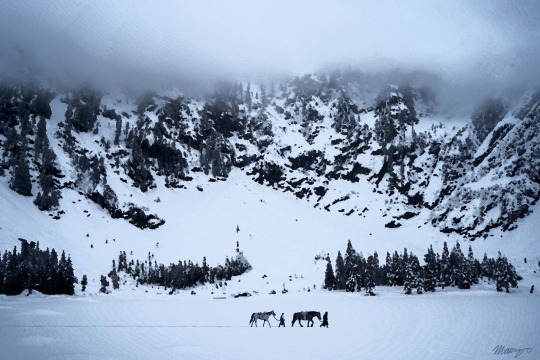
The Highlands: as terrifying as they are beautiful. It's no surprise to Ghost that Soap was born here.
The image above is actually a photo I manipulated to look like a painting! I then added Ghost and Soap (and some other small details) on top :)
Original photo by Beier C. on Unsplash
Check out more Medieval 141 here
#call of duty#medieval 141#my art#call of duty soap#call of duty ghost#Photomanipulation: how to prevent carpal tunnel#Editing photos like this is great when you have an idea and want it on paper NOW#To be specific: the photos I'm talking about here are all from unsplash#Do NOT do the same to random images you find on google#Also always always always credit the original photographer
216 notes
·
View notes
Text
These days, I have long debated what to write regarding Palestine-Israel, and questioned why I should write anything at all. The idea that celebrities and the loudest chronically online people you've ever met, blessed in their ignorance and indifferent to livehoods different than theirs, feel the need to opinate on social and geopolitical issues is absolutely insane. Most of the time, they do more harm than good—spreading misinformation like wildfire. Such opinions are what convinced me to ultimately talk about it.
Rest assured I'm not particularly qualified to talk about any of this, then again no one seems (or tries) to be. This is not a statement, simply questions about selected nuance. Full disclosure: I am of Palestinian descent. And I tried my hardest to be all-encompassing and empathetic; if I fail at any moment, my sincerest apologies.
All around social media I've seen only two kinds of posts regarding Palestine and Israel; they're either completely favorable to Israel and dehumanize Palestine or they treat Palestines as a footnote, in which it's made to assure its author doesn't endorse murder but also to point out that Palestine "deserve what's coming." There's a certain nuance required to support Palestine that's not asked when supporting Israel.
I've seen Jamie Lee Curtis reposting a picture of Palestinian children watching Israelis air strikes as if they were of Israeli children. There's no doubt it was a malicious-intended post considering she credited the photographer while deleting the original caption which explicitly explained who the ones pictured were. After being severely corrected in the comments, she simply deleted and made no mention of it. Guess children don't matter if they're Palestinian. I've seen way too many celebrities responding to the conflict with worries about how they might be affected by it, as self-centered and selfish as you can imagine.
I've seen a journalist claim that 40 Israeli babies were beheaded and multiple newspapers (many of them British, because what else can you expect from them?) and public figures reposting as a fact, only for the same journalist to later claim she actually "never said that" (she absolutely did). Also the IDF explaining they have no information confirming the allegations that 'Hamas beheaded babies'. I've seen people using statements from Sabra and Shatila massacre survivors and trying to rewrite Palestine, which were the victims of said crime, as the perpetrators. I've seen people using videos of Russian attacks as Palestinian ones. I've seen a British journalist fabricating a harmful statement from a Palestinian Ambassador to help dehumanize Palestine, and being proud of such. I've seen BBC using the nuances of language to their liking, reporting how Israelis were 'killed' while Palestinians 'died'. Always heard journalists avoid adjectives in favor of being unbiased. Again, guess that's unimportant when it comes to Palestine. Most of all, I've seen people equate supporting Palestine to anti-semitism.
If that belief steams that Palestine and Hamas are one-and-the-same, and the latter is a anti-semitism organization, then that's another concern I'd like to add the recently appraised 'nuance'.
Hamas first appeared during the first intifada, a Palestinian uprising against Israeli occupation of the West Bank, Gaza, and East Jerusalem. The signing of the Oslo Accords in 1993 marked the end of the uprising—an agreement between Israel and Palestine meant to lay the groundwork for the formation of a Palestinian state alongside Israel. Instead, it has erased Palestine's recognition as a State. In its history, Hamas have equate the liberation of Palestinians with the destruction of Israel, likely the reason they're a highly divisive organization that has often been at oddens with more mainstream Palestinian politicians. However, Hamas backtracked on its aims in a 2017 proclamation, making it clear that what it wants is to end a “racist, anti-human and colonial Zionist project.” In its 16th topic, they state "Hamas affirms that its conflict is with the Zionist project not with the Jews because of their religion. Hamas does not wage a struggle against the Jews because they are Jewish but wages a struggle against the Zionists who occupy Palestine."
The description of the Israeli occupation as fascist most likely comes from the similarities of Palestine to an "open air prison". They have no control of their own borders (IDF controls who and what enters or leaves) and are deemed stateless. "In defiance of international law, Israel considers all Palestinians inhabitants of the occupied Palestinian territory as non-citizens and foreign residents." Meaning if they leave their territory, they won't be allowed back in. Their rights in the Arab World are uncertain, particularly in Lebanon and Egypt where they are denied rights to secure residency, employment, property, communal interaction and family unification. Procedures to allow non-residents to apply for naturalisation in Lebanon, Egypt and Saudi Arabia do not apply to stateless Palestinians. So while those asking for Palestinians to be evacuated for their safety certainly have noble intentions, I ask of you: where they will go? Can you imagine walking away from home knowing you're heading into nothing? What's the difference between living in the rumbles of their homes and being homeless in another country?
The ones who decide to stay (and the ones unable to leave) are likely not making it for much longer. According to the United Nations, roughly 6,400 Palestinians and 300 Israelis have been killed in the ongoing conflict since 2008, not counting the recent fatalities. Is it truly a war if one side is so overpowering in its resources and retaliations? I feel the need to point out these stats to question why the notion that "violence is never the answer" is only used now. When it has been the only response until now.
Then again, Hamas remains a polarizing force in Palestinian society. They're an organization that's slaughtering families and less than a third of Palestinians think the group deserves to represent them. There has not been an opportunity, however, for elections to change their representatives. Palestinians living in Gaza must endure an unstable political reality with an unrepresentative government implementing repressive policies against LGBTQ people and abusive policies against detainees. Israel's Prime Minister Netanyahu purposefully propped up Hamas and there has been speculation that Iran has supported them. I've seen many post as if it's a fact, so I'd like to reinforce that it's speculation. In essence, Hamas is a terrorist group with questionable history and even more questionable allies. None of which has the Palestine's best interests at heart.
This has been overly long, and I still haven't touched on all topics I wished to address. Some I probably couldn't express properly since it's such a complex geopolitical issue. Then again, no one seems to try while all seem very comfortable in being as biased as they wish to be. So I thought I add my compassionate two cents in favor of Palestine and all the years of oppresion they've endured. I still hope you'll read this to the end, and extended to Palestine the same sympathetic hand you've rightfully extended to Israeli citizens.
My heart aches for the innocent people murdered, Palestinian and Israeli. Settlers aren’t innocent, but people who were born there didn't really choose to be one. Jewish people following matters of faith don't deserve to die. No one has (or should have) the right to take someone's life away. People at the Gaza Strip that are either just trying to survive or attempting to protect their homes also don't deserve to die, as flawed as their logic and actions might be, and many are missing that nuance. The denial of food, water, and medical aid, violates the Geneva convention. And it's a kind of retaliation that Palestine in its entirety will never be able to match.
Currently, the Israeli government is preparing a ground invasion of Gaza. An anonymous Israeli official said they would turn Gaza into “a city of tents.” A parliamentarian said that Israel should not concern itself with the safety of any Gazans who “chose” to stay in the Gaza Strip, as if every crossing hasn't been blocked.
Soon, the 'war' will end. And when it does, I can assure you Palestine won't be the last one standing. They've never had a real chance. I'd like to remember everyone that, despite Netanyahu's claims that they are "human animals", Palestinians are human beings. People. All of which deserve to live, deserve compassion and deserve protection. They also deserve to be remembered.
465 notes
·
View notes
Text
What AI Art is NOT
I keep seeing people refuting points from REAL ACTUAL ARTISTS using these talking points. So here’s a sort of FAQ of what I’ve seen.
Q: Isn’t AI Art is just a tool?
A: Tools include grids, perspective lines, rulers, apps like Sketch Up which place assets that are pre-designed and cannot be altered, et cetera. Tools are NOT: apps that draw the whole picture for you. If AI datasets were tools, then artists would also be tools. Artists aren’t tools.
Q: AI Art isn’t stealing art. It’s just like a collage.
A: I really want you to think about what a collage is versus the kind of art an AI dataset spits out. Are those things the same? Collages are derivative and generally fall under parody law, so long as the person creating them isn’t taking credit for the parts of the collage they didn’t photograph or draw. You cannot sell a collage of other peoples’ work without express written permission from those people. The elements of a collage are each separate and identifiable as such.
AI art is not a collage. The elements of an AI art piece are not separate and identifiable. They are combined into one single piece, where each piece cannot specifically be traced. AI art does not fit the definition of a derivative or parody work.
Q: If someone puts their art on the internet, it’s fair game.
A: Copyright law specifically disagrees with you on this point.
Q: If it’s not a collage and one can’t see the pieces of the art, doesn’t that make it an original work, and therefore, it’s not theft?
A: AI isn’t generating a new image. It’s taking pieces from many originals and “claiming” to make a new original piece. However, AI cannot generate these things without knowing what they are (IE skimming tags and allowing users to tell the AI what’s in the picture) Without the input of original artists, an AI would not be able to create anything, which is why most datasets include millions of pieces of art “scraped” (AKA stolen) from the internet. Currently, these pieces AI makes are being sold, and the owners of the datasets are charging for their use. This means that people who did not actually create the art are being paid, whereas the original artists are not.
Q: AI art can’t replace real artists. You’re fearmongering.
A: AI art has already replaced real artists. Shortly after Kim Jung Ji died, someone fed all his artwork into a dataset and “created” several new pieces that were almost identical to his style. Cosmopolitan magazine released a cover “drawn” by an AI and blatantly stated on the cover “and it only took 20 seconds to make.” A magazine article in The Atlantic used AI art to generate a photo of Alex Jones surrounded by papers. Someone submitted AI generated art to an art contest and won. Several anecdotal stories (not verified, but reliable) on Twitter state that small companies have fired their graphic designers or cut their work force. Commissioned artists have reported dropping sales numbers.
Corporations (and most people) will ALWAYS favor a cheaper option. If it’s good enough, it’s usable. The Cosmo magazine cover and the article header image were TERRIBLE, and they still went to print. Everyone should know by now that corporations will ALWAYS screw people over when they’re able to. If AI art becomes acceptable and commonplace, in-house artists will be replaced. This isn’t theoretical. It is already happening.
Q: It’s going to happen anyway. You can either embrace it or reject it. (Yes, this is real. Someone actually said this to me.)
A: Yes... Exactly. I’m rejecting it. Without laws to protect artists, I will fight AI art whenever and wherever I can. It might be fun and convenient for you, a non-artist, but it is terrifying and heartbreaking for artists. Websites like Deviantart and Clip Studio Paint who said “well it’s going to happen anyway” should have been the first line of defense against the creep of AI art, but they failed. It can only take over if people let it. Stop letting it.
802 notes
·
View notes
Text
ENG translation: "When I'm on stage, I know that I have to be here and only here"

An interview with Bojan Cvjetićanin in Slovenian newspaper Delo, originally published 31.10.2021.
Original article is available here for Delo subscribers. Original article written by Beti Burger for Delo; photos by Blaž Samec; English translation by a member of Joker Out Subs, native proof reading by IG GBoleyn123.
If you repost quotes from the interview, please link back to this post! And if you repost the photos, do not crop out the photographer credit.
Bojan Cvjetićanin, frontman of Joker Out, says that the success happening to them is not the result of something that happened overnight.

When he's standing on stage, he doesn't know what's actually going on. Even though after the concert, he realises that he was on it, and remembers certain moments, he's actually in a zen-like state: his head is somewhere else, and his brain does what it wants to do. Young, reflective musician Bojan Cvjetićanin believes that he was born to write music and lyrics and sing them on stage. "What I enjoy the most at a concert is when we play a new song from start to finish with the band for the first time and we're 'vibing'."
And if some of the lines above did not have context yet when we talked the day before the first concert, and sort of 'hung in the air', in packed Cvetličarna it was crystal clear what he had wanted to say. They were 'vibing' not only when they played well-known hits - Omamljeno telo, Umazane misli, Vem da greš - but also to new songs from the album, when they felt the strong energy and heard the audience was singing the new songs with them... She'll find herself there, where no one knows her, where the road always carries the smell of fresh rain (...) where pearls are in seashells, not on necklaces (Barve oceana).
Bojan truly, as he said, seems a little distant on stage, as if he's in his own world, but also in contact with the audience at the same time. He is both confident and childishly playful at once, with a wide smile on his face, with the charisma of an experienced frontman. His friend and member of the band, bassist Martin Jurkovič, with whom they started their musical journey as young teenagers already, described him well in an interview as someone who "draws all the attention to himself and the band during a concert". When the band members look at each other during a gig, they recognise each other's exact thoughts, and a kind of perversion of pleasure happens. We witnessed this exact thing at the album presentation.
"On stage, I feel sexy, I feel free and accepted. I'm on autopilot and I'm never thinking about what my next move will be, it's when I'm 'free as a bird' because I am surrounded by friends who know me very well, so I don't have to be ashamed of anything. It's also a good feeling when you know that there is a crowd of people in the hall who came to our concert because they like something that we give them. This mutual accumulation of love and energy is very strong." Are there places where he doesn't feel accepted, I query his words. "I think that we all sometimes find ourselves in a situation when we feel like we don't belong there and we ask ourselves what we're even doing there. When I'm on stage, however, I know that I have to be here and only here."
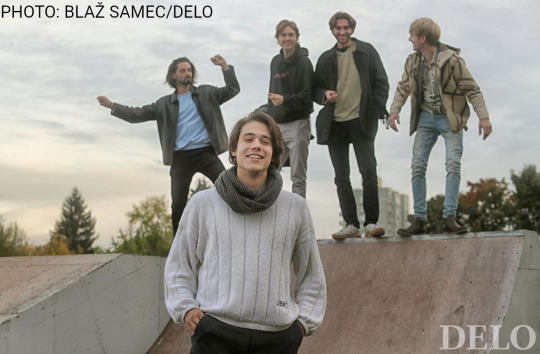
Bojan Cvjetićanin
Born in 1999. Frontman of currently the most in-demand young Slovenian band Joker Out which, with their shagadelic rock'n'roll, a genre they actually invented themselves, sold out Cvetličarna twice last week with their just-released album Umazane misli. Even off-stage, he's the 'joker' in a group, optimistic and talkative and an occasionally childishly playful young man. His lyrics (and music) are mature, sensitive and empathetic. The Ljubljana resident, otherwise a sociology student, has been making music for almost half of his life. Last but not least, a listener can quickly recognise that he actually grew up exactly where he feels the best: on stage.
Tired and sleep deprived, just a few days before the concert in Cvetličarna, which had been postponed (more than once) due to Covid-19 and which seemed like it would never happen, he had a nightmare. He dreamed "that there was one song that we just could not start and we tried again and again". He really had a lot of stage fright before the first concert this year. At the end of April and beginning of May, it still looked like there wouldn't be concerts in the summer, and then everything started to open up. They've never had as many concerts as this summer. "Those concerts hit us like a train, because we were neither mentally nor physically prepared for this many performances. We'd got used to rehearsing all day long and being completely self-sufficient. It was pretty hard before the first sold-out concert in Čin čin in Ljubljana, because the audience's expectations, as well as our own, were high. We performed with a new drummer for the first time, so the tension was even greater. When we stepped on stage, however, an enormous wave of energy that reflected from the audience washed over us, you could feel and see that people had been locked up at home, that they needed to relax, needed concerts."
"In these times, when the internet and media constantly bombard us with so much information, that defines us pretty strongly. So it seems like any kind of thinking for yourself, about anything, is already a dirty thought."
The epidemic was also a time when changes happened in the group, as during the creative process, they realised that not all members of the band have the same creative drive, so in the end, they switched their drummer. Since then, they have significantly changed the way they work. They have created, even if not completely intentionally, a spirit of band co-production, they've become more dependant on each other. They've realised that music demands that they help each other. It's also important that, when they start to grow wings from all the congratulations and praises, they pull each other back to solid ground. In interviews and articles, he is described as "the most recognisable voice of the new generation of Slovenian rock" or as "a rising star" and he feels honoured by those compliments, but in truth, those titles don't really tell him a lot. Hearing that from the people who listen to their music is what means the most to him. He says that it's not the sea of congratulations that caresses your ego, but rather certain moments and situations when you actually feel strong and in your own skin. "In the moment when the light shines on you on the stage, the feelings are indescribable, you feel like a god. That's the 'awesome' thing, not when someone tells you that you're a god." He adds that he thinks he's still the same Bojan he was years ago, when all those congratulations and titles didn't exist yet.

"The bassist Martin and I have been making music for almost half of our lives and I think that with time, we've managed to work through everything that happens during the evolution of a band. Our current success didn't come overnight, it is the result of a long period of work." The pivotal year for Joker Out was 2017, when it first started looking like this band could truly become 'something'. "From the start, you want it to be something more, but it's usually just a distant wish, like Cvetličarna used to be." Back then, however, after the single Omamljeno telo, all the positive response gave them the feeling that everything was being taken to a higher level. And there were several of those levels, they have jumped over many of them. "If I look at the situation objectively, it seems crazy to me that we sold out Cvetka (Cvetličarna, a.n.) twice with three singles." As he says, however, nothing that they do in the band is left up to chance. "Very early on, we put our heads together and had an in-depth discussion, first of all about our relationships with one another, and then about our duties, and we promised each other that we would never be afraid to tell each other what we wanted. When we determined our wishes, we turned them into goals, which we are now achieving." In his words, something that definitely contributes to their success is that they're surrounded by people who love what they do. "Now we work as a team, and if a team works well, it can't miss." In the future they want to release another album, and they're also drawn beyond the borders of Slovenia, to the Balkans.
As a band, they want to give people the things that drive them as artists - currently the prevailing theme in their lyrics is love, but also self-reflection and musings. These are very general, many songs talk about how young people sometimes feel constricted or lost and are looking for their place in the world. "We're currently not interested in politics and we don't plan to define ourselves politically one way or another, although our songs do feature some messages about society. We think that our job is to spread love and that people can, based also on our lyrics, come up with their own political opinion, without our imposition," he says.

And when I challenged him to use one of their songs to describe his current feeling before the concert (adrenaline, fear, uncertainty, expectations), he said that "there's a butterfly in my head that's just swimming through a weird universe. It feels like people around me are buzzing and not actually talking." Metulji ('Butterflies') is actually his favourite song. He wrote it at the same time as Omamljeno telo and it already meant a lot to him back then. He wanted to hear a recording of it, but today he says that he's happy that they recorded it later, because back then it wouldn't have been anything like it is today. "Now, the song is exactly as we imagined it back then, but didn't know how to embody it."
As the singer, Bojan Cvjetićanin is also the most recognisable and exposed member of the band. On the Slovenian scene, his role models are (were), among others, Tomi Meglič from Siddharta and Gregor Skočir, the singer of the band Big Foot Mama - "today I can already call them friends, they feel respect for us, as we do for them and for both bands. They come to our concerts, we hang out in private. Even though some people say that you shouldn't meet your idols, because then everything falls apart, now that I know Tomi and know who the person who made all that music is, I like listening to it even more." Among foreign frontmen, his favourite is Liam Gallagher, who became famous with the band Oasis. He was actually his inspiration for keeping his hands crossed behind his back while singing on stage. "I had a period of that 'Liam pose'... I didn't know what to do with my hands on stage, and when I put them behind my back once, it seemed like a good trick. Today, I grab the guitar more and more on stage, so I don't have an issue with what to do with my hands anymore. (smile)." What, then, are the key characteristics of a good frontman? "He has to be honest, genuine. There are many types of lead singers, Mick Jagger, for example, gives himself away completely, goes crazy and dances, while some others stand still constantly, but they both completely enchant you." He doesn't think about this too much, he simply exists on stage.

While some musicians, actors, or other performers are completely different, introverted, in their private lives and in the backstage, Bojan is generally very talkative and smiley. "Even as a little kid, as others have told me, I talked all the time, I wanted to socialise, with older people too, so it seems like I really never had issues with making connections. Now it's actually the same, there are just more people in front of the stage." At Poljane High School, which, as he has stressed many times, shaped him a lot as a person, he performed in a theatre group, so he already experienced the stage in the role of an actor, later he was on TV in the role of a host. These days, he still often says, half-laughing, that - if music won't be what he earns a living with - he'd like to be a sociology professor at Poljane. "But I heard they just got a new one, so I don't know how realistic the chances are."
But for now, he doesn't have to do anything other than make music. Bojan Cvjetićanin is also the author of the lyrics of most of the songs, in which, as he said, he's a kind of medium who conveys others' pain. While he did say not long ago that as a songwriter, he sometimes lacks unhappy emotions and that he doesn't know the pain of a broken heart, it's different now. "I got my dose of inspiration for quite some time..." He says that when making songs, it's almost always the music that comes first, and then the lyrics. "Most often, I take the guitar, lately I also sit at the piano, and I try to find the chords that sound interesting to me in that moment, and then I also sing along. Usually, associations form in my head and it feels like it suddenly becomes clear to me what the lyrics will be, sometimes I "accidentally" sing some lines that end up staying in the song and define what I will talk about." The lyrics are mostly, as mentioned, about love and self-reflection, but there are also a few slightly different ones among them. Aleppo, the duet with Omar Naber, who has been by his side from the beginning and helped him record demos, was created differently. The song, which talks about the city Aleppo in Syria, which is ravaged by war, was created when, in a TV report about what was happening there, he saw a young girl that inspired him. Then, he immediately started writing.
As someone who is sensitive to feeling other people's pain, does he ever fear that he could lose this empathy in the rather apathetic world we live in? "Just last year, there was a moment when I thought that I was completely alienated from myself, and I felt like I was never going to fall in love again. For a while, nothing excited me, I thought I had gone numb, but then something suddenly changed, I just waited for that natural 'click'." When songs become evergreen, hits that everyone sings and that connect generations, is it also important how much empathy the lyricists have?
"Absolutely. You have to have enough empathy to be honest with yourself. If you're honest, some people will connect very strongly with your lyrics. Nowadays, so many songs in the musical world are written just to be written. Not because they carry a real story within. And you can really feel that. It's that easy."
If you repost quotes from the interview, please link back to this post! And if you repost the photos, do not crop out the photographer credit.
85 notes
·
View notes
Text
RECOGNISING AI GENERATED IMAGES
(Disclaimer: This is not a foolproof guide as these softwares are constantly changing, but it is intended to help you learn things to possibly look out for.)
We've all heard "count the fingers, count the teeth" for AI generated images of people, but more and more frequently I see people sharing images of objects and scenery that are AI generated without realising it. These people are often vocally anti-AI but still get caught out. This post is not intended to shame or make anyone feel bad for not recognising AI imagery. Usually, AI images posted on platforms like tumblr are not tagged as AI; the OP is often fully intending to trick you just to gain some quick numbers, so it's not your fault that their tactics work. They're designed to be pretty at a glance and betting on you not looking any closer.
So, that out of the way: How can I spot and avoid AI Generated images?
Here's some things I've learned to pick up on, and now I can spot them pretty much on sight.
Full guide under the cut. Contains AI images as examples.
1. Source

Your first easy step is to check if there's a source. Remember when everything on tumblr was just credited to weheartit?? This is the new worse version of that. If the image has no source in the description describing an artist, photographer, brand, location etc... check the original post.
If there's nothing in the tags to indicate that it is art or a piece of photography or an advertisement, it could be AI. Sometimes the caption is just something generic or aesthetic like ~witchy cottage life~ etc. The tags above for the image below of the room with the tree are largely nonsense.
Important note: A watermark does not always indicate a photographer or artist: if you think it might be AI but it has a watermark, that will most likely lead you to the socials for the person who created the image using AI.
2. Visual Soup

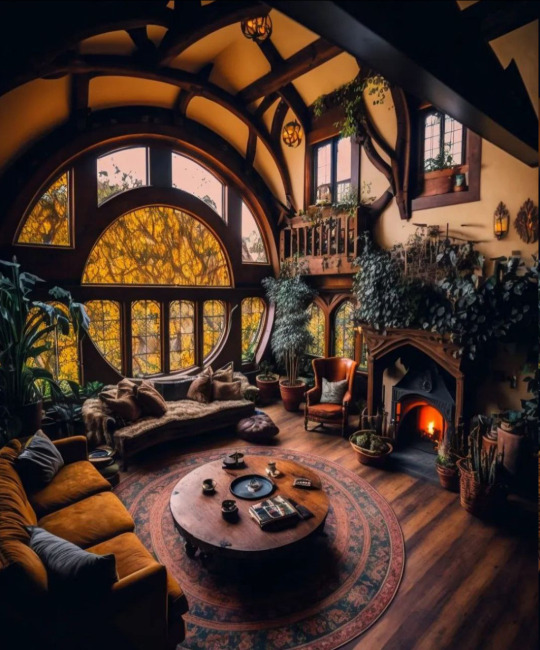
Zoom. In. It sucks to feel like you have to get into the habit of pausing and closely checking the details of images on platforms designed for infinite scroll and quick engagement, but if you get into the habit of this, soon you'll be learning to spot AI at a quick scroll glance.
Generally, when you zoom in on a photograph, the details and divisions of where one object ends and another begins still stays the same, just out of focus. Zooming in on an AI image, the details become... soup. Why is that plant morphing into the countertops? Why is the tap floating? Why are there five thousand burner dials???

The same applies to art. Zooming in on art reveals things like brush strokes, pencil lines, pixels, imperfections and intentional small details. If zooming in reveals soupy details that don't look like intentional stylistic choices it could be AI.
3. Interior Design Disasters
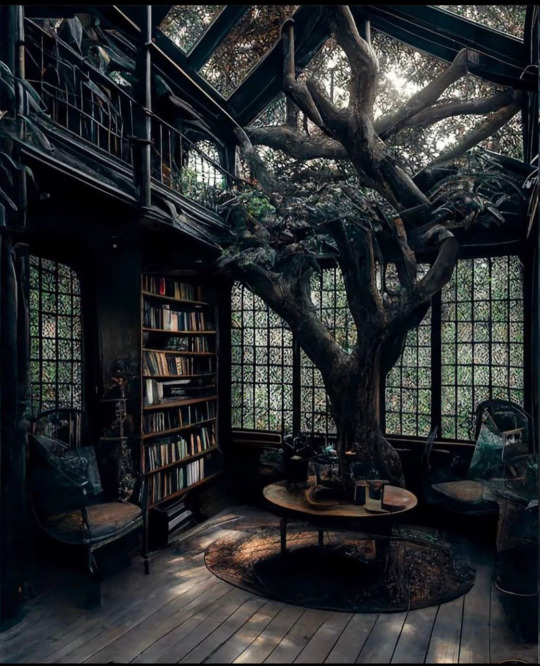

One thing AI doesn't seem to be good at is separating the depth and layers of rooms full of furniture, and making things sit properly in their 3D space. Window frames are wonky. Chairs and tables are fused to each other, or to walls. Bookcases get narrower at one end when they really shouldn't. A little wonkiness is fine and expected in artwork, but when the whole thing isn't sitting right, it could be AI.
(Compare the white image on the right to these real photographs of a similar house, and notice how messy and nonsensical the AI image seems).
(Edit 03/06/2023: See also this abstract furniture that still has a proper sense of depth and doesn't merge into the background)
4. Toothpaste

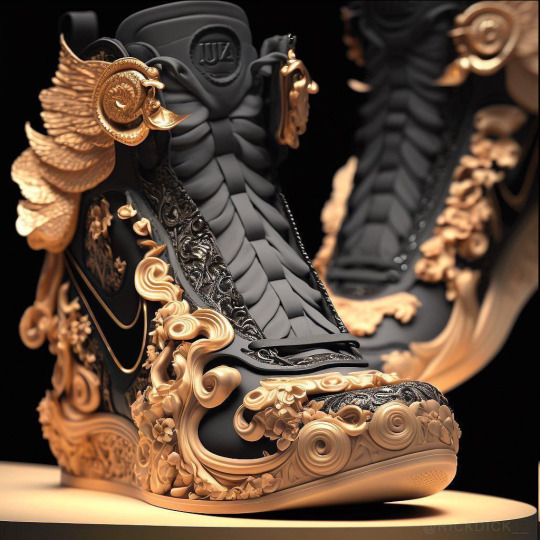
I don't know what else to call this but midjourney effing loves it. I most commonly see this on things like AI generated objects, outfits and garments rather than scenery. It looks like the software has applied all the details with a piping bag. Weird, greebly swirls like it's hoping you won't notice if it adds enough visual noise. Notice it. It's AI. And it looks super fucking weird.
Midjourney also loves adding weird concentric circles to everything, which can be seen in the image example for Lighting below.
5. Giblets
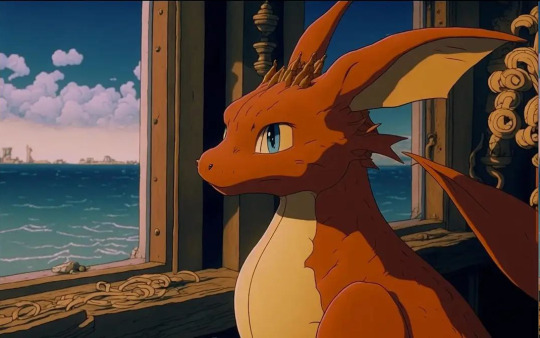
What is that bowl of stuff?? What is on that shelf?? What's that pile of...things?? They're giblets. This is another prominent midjourney feature and another example of visual noise. Stuff it with details, and maybe the viewer won't notice that what they're actually looking at is a lumpy pile of nonsense that definitely shouldn't exist. Spot the giblets!
6. Lighting

This one is hardest to describe and to spot, but I often find that the lighting in AI images of scenery and objects has a flat, dream-like quality. Once you study it, it begins to feel distinctly unreal.
7. Names
Lastly, some people do state that an image is AI in their descriptions or tags, but might not do so in those exact words. If you aren't already familiar, here's the names of the most prominant AI generators as of May 2023:
Midjourney
Dall-E or Dall-E 2
Stable Diffusion
Deep Dream
Artbreeder
WOMBO
NightCafe
Lensa
Stablecog
BigSleep
Brands such as Bing, Google, Shutterstock and Canva are also bringing out generators
8. Multiple Angles (added 03/06/2023)
I forgot to add this earlier, but it's another very simple tell! If the images are objects, garments or rooms... are there multiple images in the post of the same object or location from different angles? No? Then it could be AI. The shoes used as Toothpaste examples above were part of a set of lots of different shoes, but of each design there was only one image. AI is Not Good at creating the same thing twice consistently.
(See these photographs of hair pins. The post contains a source link to the photographer's flikr account, where there are multiple images of each pin in different angles and lighting, confirming that they're real.)
If I think of anything else or some new tell starts to appear, I will come back and update this post, but for now, thank you for reading. My hope for this is that people will either share AI generated images less, or if they do, at least learn to spot and tag them so that those who don't want to see them (aka me!) can filter and avoid.
#AI#AI image#AI generated#AI art#anti AI#AI generatred images#how to avoid AI#how to recognise AI#i had to look at so many ai images to make this post and i hated every second i am so brave#I hope this is educational and helpful I really do!!
87 notes
·
View notes
Text
Does Robert Carlyle, now 62, get his kit off in the new TV series of The Full Monty? ‘Nobody wants to see that,’ he says with a grin.

Photograph: Alana Paterson/The Observer
Interview
By Rebecca Nicholson, printed in Guardian/Observer
Robert Carlyle’s life has been defined by two remarkable characters: the explosively violent Begbie, and Gaz in The Full Monty. Here, he talks about his Glasgow childhood, Britpop hedonism – and playing the PM…
It was 1997, and Robert Carlyle was in his mid-30s, when he first played the stripping Sheffield steelworker Gaz in The Full Monty. Last year, to get ready to play him again – this time for an eight-part TV series – he sat himself down to watch the film. He seems slightly embarrassed to admit it – he’s not the kind of actor who likes to watch himself. “And I’m not about trawling back through something from 20-odd years ago,” he says. But The Full Monty was calling him to South Yorkshire, so trawl back he did. He decided that he would watch a few minutes, then he would move on. “And I sat there and watched the whole thing.” He was surprised to find that it still worked, even after 25 years. “I don’t know if I can say this, but I really enjoyed it. It really stands up.”
The original Full Monty told the story of six unemployed men from Sheffield who put on a DIY strip show at the working men’s club. It was an indie film, shot on a very small budget, and it almost went straight to video; a last-minute re-edit saved it from obscurity and it went on to be a staggering global success, making £200m at the box office. Carlyle’s Gaz is the ringleader, a schemer and a dreamer trying to keep enough money in his pocket to put the heating on when his son comes to stay.

I had misremembered it as a film about men getting their kit off, a bawdy hen night of British comedy. But rewatching it I was struck by how political it seems now. Three decades later, in the new series, people are still broke and Gaz is still scheming, but the working men’s club has shut down, the school is crumbling and children are going hungry.
‘I love it when I dive into a job. You’ve got a little family unit, you love each other to bits and you think you’re going to be friends forever’
“It’s easy to forget that the film is quite heavily political,” says Carlyle. “It makes a point. And I think the same applies to the TV show. These people have lived through what seems like 25 years of austerity.” He credits the writers, Simon Beaufoy and Alice Nutter, with its gallows humour. “But you see that the older people’s lives have been pretty tough for the past 25 years, and then there’s 20 years of what Simon calls the Young Montys, the younger characters, heading for the same shit. So it’s good that this has been made. It shows what people go through to survive the day to day.” Not just men getting their kit off, then. Does he strip this time? “Nobody wants to see that,” he says, with a grin.
Carlyle is a great talker, open and funny and relaxed. He admits he was not always this way, particularly when it came to the press, though he did have his reasons. He’s calmed down a lot since his wilder days, in part because he is, as he says, “125 years old” (he’s just turned 62, though he looks younger) and also because he now lives in Vancouver, on the west coast of Canada. “There’s a laid-back attitude and quality here I enjoy,” he says. He moved there to film a TV series, Once Upon a Time, in 2011, with his wife, Anastasia Shirley, and three children, and found that he liked the city, though he has kept a home in Glasgow, where he grew up, and the family splits its time between the two. His kids are 21, 19 and 17.
Do they have Canadian accents? “Aye, they do,” he laughs. “My eldest son’s got this strange – hang on, let me see if I can do it – this half-American thing with a bit of Scottish thrown in, you know?”
Carlyle is at his happiest when he’s at home. “I’m a homebody, there’s no doubt about that,” he says. “I’ve got loads of friends, particularly in London, and I enjoy it when I get to meet up with them. It’s brilliant. But I’ve always been a bit of a loner to be honest.” Carlyle was brought up by his father; his mother walked out when he was a child. He has spoken before about moving around a lot, living in communes. “I always think about it as darkness and light, my life, because the first part of it was pretty dark. My mother had left when I was a wee boy. I was brought up by my dad alone in Glasgow in the 60s, and the single- parent family, there was not a lot of that around, especially a single-parent family with a father. That made me instantly different from the rest of the people who were around me.” He seems surprised by his own candour. “Genuinely, I’ve never really spoken about this before. But I guess that’s probably where it started.”
I still love Begbie. It was such an explosion. An absolute avalanche
Did he feel like an outsider at school? “When I was very young, yeah, definitely. It’s the little things.” He has a teacher friend and he says he is pleased to hear that things are very different now. “But back in the day, if you had to get permission for something, the teachers would say, bring a note in from your mum. Stuff like that. Of course, when you don’t have that, that really hits home, even when you’re a wee boy.”
Carlyle left school at 16, became a painter and decorator, and worked with his dad. At 21, he came across a copy of Arthur Miller’s The Crucible, and it lit something up inside him. He went on to the Royal Scottish Academy of Music and Drama, and set up his own theatre company. For a loner, he has picked a very sociable job.
“Yeah, but I’ve been doing it for so long that I’ve become very good at separating those things. I love it when I dive into a job, whether theatre, film, TV, whatever. You’ve got a little family unit, you love each other to bits and you think you’re going to be friends for ever. Then two months later you never see them again,” he laughs. Family means a lot to him. “I’d always wanted to have a good family unit, to be able to connect with each other and be pals with each other,” he says, talking about his three children. “Thankfully, we’re great friends.”
In 1991, he was cast as the lead in Ken Loach’s Riff-Raff, and worked steadily through the 90s, playing a serial killer in Cracker, which set the tone for more villainous roles to come. But nothing prepared him for the double whammy of playing the sadistic maniac Begbie in Trainspotting at the end of 1995 and Gaz in The Full Monty, 18 months later. “From that point on, they were massive shadows that then followed me around for the rest of my life, the rest of my career,” he says. “So it was something that I had to get used to, the whole fame thing. Because I am, as I’ve been saying, quite a homely guy, a family man, it took me a long time to get used to that.”
To say the films were hits is an understatement. Both were phenomena that travelled around the world. One of the strangest things about watching The Full Monty again, he says, is that it took him right back to that time. “It’s looking at yourself in another life, and all the things that were happening in my life back then. I mean, we can all look back in photographs, but I’ve got this living, breathing thing in front of me.”
What was happening in his life back then?
“Ha!” It was the height of the Britpop era, and because of those films, Carlyle was right at the heart of it. Back in the day, as he puts it, he was invited to everything and went to most of it. “I met all the personalities of the day, the Oasis lads, Damon Albarn, who’s still a great friend. I was right in the middle of that whole thing, enjoying that life.”
Was it as hedonistic as it seemed? He doesn’t pause for breath. “One thousand per cent,” he grins. “It was incredibly hedonistic, but it was exciting. If you think about it politically, we’d just come out of Tory rule. Blair was there, everything seemed to be on the up. And I can remember that feeling.” He appeared in an Oasis video, for the song Little By Little.
Was it easy to be friends with Blur and Oasis, given their famous rivalry? “Hahaha. To be honest with you, I was really good at not getting involved. But I remember when I did Little By Little, Damon was like, ‘Why the fuck did you do that? Come and do one for me!’ I said, ‘But you never asked,’ which was true! And that was the end of the conversation.”
“It doesn’t sound like you were a homebody in those days,” I say. He laughs again. “No,” he says. “There wasn’t so much homebody then. I certainly wasn’t shy in getting out the door.”
But there was a darker side to that era. His fame made him a person of interest to the tabloids. He says it’s nothing compared to what some people experienced, but still it sounds unpleasant.
“At the time, going through that was horrible, to be honest with you, because I didn’t understand it. I was suddenly in this world and I was very open. Probably too open, at times.” The papers responded by reporting on his private life and his family. “They got in touch with my mother and pulled her out the dark, and that was really upsetting. So I slammed the door shut for a long time, because I just hated it.” He was tight-lipped in interviews and wouldn’t do chatshows, though he will say he still regrets saying no to Michael Parkinson. “I think that was probably quite clever, because then you do keep a little bit of yourself. I mean, you see people on these chatshows and everything comes out and you go, ‘My God, I don’t know how you can live your life like that.’”
He does them these days, however. “Because I’m 125, I’m more used to it,” he jokes. “I can do it better now. Time and age is a great thing.”
Is it just time? Has he mellowed with age?
“It’s family, children. My children came in the 2000s, so all the stuff in the 90s, there were no kids then, but once children arrive in your life, everything changes overnight. So that becomes more important. That becomes your focus. And you begin to think, ‘Oh, the other stuff’s not actually worth bothering about.’”
Carlyle has had the chance to go back to two of his most iconic characters. He revisited Begbie for T2, the Trainspotting sequel, in 2017. A sequel was always planned, and Carlyle says he and Jonny Lee Miller, who plays Sickboy, wanted it to be sooner. “But Danny Boyle [the director] always said, we’ll do it, but when you’re older. He was obviously right, because it’s in the face. You can see that life has been lived.”
Even more so than Gaz, the terrifying Begbie is the character who has followed him around the longest. “The terrifying Begbie!” he laughs. “I love Begbie. I mean, who knew? Who knew what was going to happen with that character? It was such an explosion, Trainspotting. An absolute avalanche.” At the time, he knew that the film was going to be something special. “I thought this character is gonna be around for a while. But I thought, maybe a few years.” Yesterday, he says, he went to the butcher’s near his house, and the man in the shop, in his 20s, from Bilbao, recognised him and said he loved him in Trainspotting. “He said, ‘I’ve got a T-shirt of you, of Begbie with the glass.’ This thing I thought was going to last a few years, is still there, in people’s minds, 27 years later.” Wherever he goes now, people still recognise him as Begbie. “That mad character!” He’s not exactly a teddy bear, is he? “I mean, this is a line from the film – he’s a psycho, but he’s a mate, so what can you do? I do love him. And Gaz. Both these characters have given me a tremendous career and a tremendous life, and you’ve got to love him for that.”
Besides, Begbie’s not dead yet. There is a six-part TV series, The Blade Artist, in the planning, about Begbie’s post-prison life as an acclaimed artist in California. Carlyle is working on it with Irvine Welsh and Hex author Jenni Fagan.
“It’s been brilliant, this one. I mean, let’s face it, Begbie is me. So to be right in at the beginning of that and be able to go, well, actually, maybe change this, change that… that’s where we are at the moment.” He thinks they’ll start shooting in the next year or two.
For now, he’s off work, relaxing in Vancouver, travelling with his wife, spending time with his family. “Back in the day, it was all about the next job, next job, next job and I don’t think so much like that any more.”
Recently, he’s been playing the British prime minster, Robert Sutherland, in the political thriller Cobra. “Who would have thought? Begbie, Gaz, the prime minister…” he says. In the original Full Monty, Gaz explains that he can’t go shoplifting because “I’ve got serial killer written on my forehead.” Carlyle nods. “That’s right. That’s probably my issue with parts. Certainly with Sutherland, when he gets angry, I’ve got to really pull it down. Don’t get Begbie-angry,” he says. “Begbie as the prime minister!” I wouldn’t put it past him.
The Full Monty will be streaming on Disney+ from 14 June
106 notes
·
View notes
Text
ok yj band au. i have not come up with a fic title yet. it’s tbd bear (bere? how do you spell it in this context???) w me lol
natalie, van and jackie are in a band called ‘the yellowjackets’. (nat-drummer/songwriter, van-lead singer/songwriter, jackie-guitarist/bassist)
their friend/publicist/manager/something tbd is laura lee bc i didn’t think she’d really be into the band but she wants to work with and support her friends
laura lee’s ex, is model lottie matthews (who she’s still close friends w bc yk. lesbians)
lottie’s close friends w taissa turner, who’s in law school and photographer shauna shipman
the fic is set in the late 80s/early 90s but that’s also pretty tbd. any song written after the year technically does not exist and since i am not a song writer, the ‘original songs’ that the yellowjackets write will 100% just be songs that i like and wanted to put into the fic
for example; they might preform mcr or taylor swift, or something-but the songs and artists will ALWAYS be given credit (i will make a playlist of all the songs in the fic at some point)
there will also be covers of songs that already exist (queen, bowie, maybe nirvana if i do timing right)
ships will include: past lottielee, eventual taivan, lottient and jackieshauna (maybe laura lee and someone i create, who knows!)
other random things;
-ben and paul run a gay bar called ‘the wilderness’ and will be reoccurring characters
-misty/akilah/mari/gen/melissa will show up but prob won’t be big characters
-travis and javi will also be in this, i have an idea for their storyline but i’m gonna keep this one a surprise
-it’s gonna be angsty bc it’s me and i can >:) also bc this is yj so….angst.
-prob multi chapters so i’ll plan for the next week or so and try to start writing and publishing over summer break
-due to the multi ch and length im hoping for it to be, i will not be posting full chapters here on tumblr, but i’ll put up the ao3 link and random snippets
-also, the only instrument ik how to play is the trumpet and i haven’t done that in years. not do ik how law school works. please be advised.
#yellowjackets#natalie scatorccio#nat scatorccio#vanessa palmer#van palmer#jackie taylor#shauna shipman#lottie matthews#laura lee#taissa turner#travis martinez#javi martinez#misty quigley#ben scott#lottielee#lottienat#taivan#jackieshauna#the rise of the yellowjackets
68 notes
·
View notes
Text
I’m not sure how reliably I’ll be able to keep up with it, but I’ve been wanting to start posting weekly or monthly Good News compilations, with a focus on ecology but also some health and human rights type stuff. I’ll try to keep the sources recent (like from within the last week or month, whichever it happens to be), but sometimes original dates are hard to find. Also, all credit for images and written material can be found at the source linked; I don’t claim credit for anything but curating.
Anyway, here’s some good news from the first week of March!
1. Mexican Wolf Population Grows for Eighth Consecutive Year
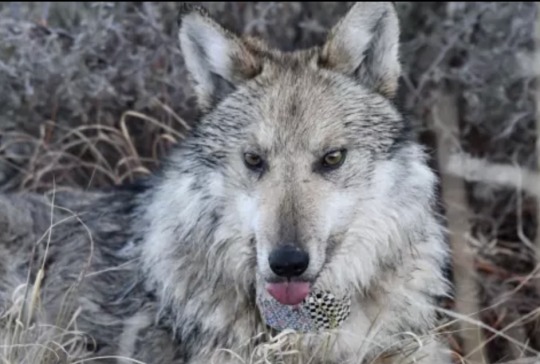
““In total, 99 pups carefully selected for their genetic value have been placed in 40 wild dens since 2016, and some of these fosters have produced litters of their own. While recovery is in the future, examining the last decade of data certainly provides optimism that recovery will be achieved.””
2. “Remarkable achievement:” Victoria solar farm reaches full power ahead of schedule

“The 130MW Glenrowan solar farm in Victoria has knocked out another milestone, reaching full power and completing final grid connection testing just months after achieving first generation in late November.”
3. UTEP scientists capture first known photographs of tropical bird long thought lost
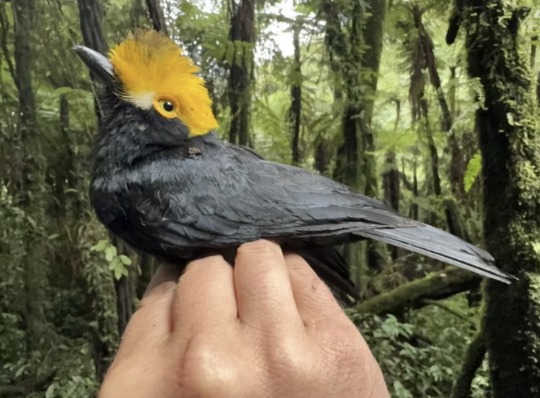
“The yellow-crested helmetshrike is a rare bird species endemic to Africa that had been listed as “lost” by the American Bird Conservancy when it hadn’t been seen in nearly two decades. Until now.”
4. France Protects Abortion as a 'Guaranteed Freedom' in Constitution
“[A]t a special congress in Versailles, France’s parliament voted by an overwhelming majority to add the freedom to have an abortion to the country’s constitution. Though abortion has been legal in France since 1975, the historic move aims to establish a safeguard in the face of global attacks on abortion access and sexual and reproductive health rights.”
5. [Fish & Wildlife] Service Approves Conservation Agreement for Six Aquatic Species in the Trinity River Basin

“Besides conserving the six species in the CCAA, activities implemented in this agreement will also improve the water quality and natural flows of rivers for the benefit of rural and urban communities dependent on these water sources.”
6. Reforestation offset the effects of global warming in the southeastern United States

“In America’s southeast, except for most of Florida and Virginia, “temperatures have flatlined, or even cooled,” due to reforestation, even as most of the world has grown warmer, reports The Guardian.”
7. Places across the U.S. are testing no-strings cash as part of the social safety net
“Cash aid without conditions was considered a radical idea before the pandemic. But early results from a program in Stockton, Calif., showed promise. Then interest exploded after it became clear how much COVID stimulus checks and emergency rental payments had helped people. The U.S. Census Bureau found that an expanded child tax credit cut child poverty in half.”
8. The Road to Recovery for the Florida Golden Aster: Why We Should Care

“After a five-year review conducted in 2009 recommended reclassifying the species to threatened, the Florida golden aster was proposed for removal from the Federal List of Endangered and Threatened Plants due to recovery in June 2021, indicating the threats to the species had been reduced or eliminated.”
9. A smart molecule beats the mutation behind most pancreatic cancer
“Researchers have designed a candidate drug that could help make pancreatic cancer, which is almost always fatal, a treatable, perhaps even curable, condition.”
10. Nurses’ union at Austin’s Ascension Seton Medical Center ratifies historic first contract

“The contract, which NNOC said in a news release was “overwhelmingly” voted through by the union, includes provisions the union believes will improve patient care and retention of nurses.”
This and future editions will also be going up on my new Ko-fi, where you can support my art and get doodled phone wallpapers! EDIT: Actually, I can't find any indication that curating links like this is allowed on Ko-fi, so to play it safe I'll stick to just posting here on Tumblr. BUT, you can still support me over on Ko-fi if you want to see my Good News compilations continue!
#hopepunk#good news#wolf#wolves#mexican wolf#conservation#solar#solar power#birds#abortion#healthcare#abortion rights#reproductive rights#reproductive health#fish and wildlife#turtles#alligator snapping turtle#snapping turtle#river#reforestation#global warming#climate change#climate solutions#poverty#social safety net#flowers#endangered species#cancer#science#union
15 notes
·
View notes
Text
Jann Haworth was the artist who made the Sgt Pepper cover.
She will always happily say that it was 50/50 between her and her husband at the time, Peter Blake, but imo her name should go first in that collaboration. And instead she is so often not mentioned.
This is not one of those things where it was his work and she just helped a little. It was a joint project. Some people's account of it says that Robert Fraser originally brought the project to both of them from the very start. She was a known and brilliant artist who knew Robert well, and had already exhibited at his gallery, so it seems likely to me. But even if it was originally brought to Peter Blake, she was certainly involved from the design stages, right through to completion.
She freely gives Peter credit for the idea of it, the idea of the crowd of heroes behind the beatles, but she suggested they do it in her style not his - ie as standing silhouettes, rather than paper collage - which meant she had the experience and the skills to actually create the thing. She came up with the floral arrangements so it wouldn't be ruined with graphics. She did the majority of the work.
She's super well adjusted about the whole thing, she tends to set people right about it when they claim she's copying his work, rather than continuing her own in her more recent pieces. You can read interviews with her here, here, or here.
One of my litmus tests for beatles books is whether they mention her at all. They don't mostly, because they'd rather die than actually question anything. But if you think it wasn't known until more recently then know that George Martin in 'Summer of Love' in 1995 credits her fully as a co-creator. It was never a secret.
"Along with the Pepper tableaux cloth figures, Jann Haworth came up with a number of other original ideas for the venture. [...] She said that it would be very nice not to have real lettering on the Sgt Pepper cover but to do something like that kind of civic flower-bed lettering. [...] Jann spent a long time building a background, a scene against which the Beatles would be photographed, hanging the first row of photos on the studio wall, then fixing the other blow-ups on poles and spacing them in tiers at intervals of a foot or so, to give the picture the illusion of depth. Haworth also did all the hand tinting of the original black and white photographs."
Summer of Love, George Martin




(Most of the sites where I found pictures of the Sgt Pepper making, DO NOT NAME HER at all, much less credit her in photos, but here she is, creating the album cover with her bare hands, while Peter Blake stands around.)
I know none of this is probably news to anyone much around here. I just needed to rant about it, having seen this quote from peter blake. It's just hilarious to me that he's complaining about the lack of money, after he's benefited from all the fame and credit for it over the years, and meanwhile she's left out of the story entirely... it's just so incredibly male of him. Any time he doesn't immediately set his interviewer straight about how that album cover was made is a disgrace. (Also his whining that he's only remembered for Sgt Pepper is a lot like when John would whine that people played Yesterday to him... if you're going to try and take ALL the credit for something, you can't complain when people tell you their favourite bit was the bit your partner was responsible for.)
178 notes
·
View notes
Note
if you don't mind, could you spare some pointers about archive work? i would love to try some but i honestly have no idea where to start.
happy to give some guidance since archiving is something i'm passionate about :)
my experience with archive work lies largely outside of mcr specifically, and subject area 100% impacts the archiving experience. that disclaimer in mind, i'm a history grad student, work with physical & digital archives, and managed a smaller one for a few years. on the fandom side of things, i run @thursdayarchive with nic @raytorosaurus (who is also a great resource for the specifics of mcr archiving & who suggested some advice given here!).
but you definitely don't have to have much experience to archive! archiving, at its root, is about assembling materials relevant and organizing them in a way that allows other people to access them. And this work is super, super important (esp since so much of mcr's history dates back to an era of the internet that is rapidly disappearing) & definitely doesn't require you to develop a sophisticated skill set.
There are three basic things to take into consideration when you're starting to archive:
Artifacts: What you collect
Personal organization: How you will keep track of what you find
The repository: How you will share your archive
Artifacts: Collect materials
Finding materials to share is the meat of the archiving experience, and often it's what takes the longest time. It can also be a little intimidating at first, especially considering the amount of unsourced photos that regularly float around mcr spaces. some notes on that end (mainly concerning photographs, since that tends to be the currency the mcr fandom deals in):
first, you don't have to just archive photos--the range of interesting materials related to mcr is vast. an archive might include photos, interviews, videos, magazine features, music, etc.
Consider what gaps might exist within fandom archives. MCR fans have run a number of really great archives in the past, so some work might not need to be done. Of course, those materials might not get circulated--and recovering it would be a worthwhile task. Perhaps recent interviews haven't been compiled and transcribed. Perhaps you can't believe that people aren't talking about a certain two-minute excerpt from a Frank podcast from five years ago. Perhaps you've noticed a dearth of photos of Mikey from 2010 in fandom spaces. Do what is interesting to you, but build on past archival work when you can. Honestly I can really see a need to keep track of a lot of the fan videos from the recent tour.
Decide if you want your archiving to center around a certain theme--like, a certain member of the band, a certain type of media, etc.
KEEP TRACK OF SOURCE CREDIT. the mcr fandom has been awful at keeping track of photo sources in the past, and as a result many of the most of the iconic photographs have been totally divorced from their source. Also, make sure that the person you're crediting is the actual original source.
On that note: while it might not seem like a big deal, reposting without a source is. Music photographers make their living by licensing their photos, and if a for-profit publication wants to use those photos but doesn't know photographer, they can't, and the photographer loses out on business. Non-professional photos really should be sourced, too. Fans in a photo might not want to have their picture spread around for a number of reasons (this specifically has happened in the mcr fandom, where a collection of photographs were reposted without permission from a private photobucket).
It's always easier to find photos at their source rather than sourcing photos that you already have. A lot of photographers post their pictures on their own archives, often on places like getty images, photobucket, flickr, and their personal websites. a lot of these sites are searchable, and they're a decent place to start.
keep track of the names of photographers and interviewers that you see often
familiarize yourself with archive.org. it is your friend when you encounter dead links.
it's also worthwhile to have a decent grasp on the mcr timeline, or at least know where to reference it. since i have a shit brain for remembering specific dates, i generally reference concertarchives (though it can be a little unreliable at times and warrants some cross-referencing).
Personal organization: Keep track of what you find
When you locate something you'd like to archive, you'll want to keep track of the information associated with it--in archiving, we call that metadata. This can be a bit of a headache in the moment, but integrating your own organizing systems is a lifesaver in the long run. Consider:
what kinds of information might interest your audience? Typically, I include source, date, location, people included (if it's a photo), and any other context that might be relevant to the source, if I can find it.
what is the easiest way to track that information? I keep a detailed spreadsheet for that purpose, but you might find it useful to archive the item onto your repository immediately. there's no one right way to do this step, but having a standard practice can help you avoid confusion or accidentally sharing incorrect details.
The repository: share your archive
The whole point of archiving is to share materials with other people--though this is certainly easier said that done. Your repository doesn't have to be anything more than your blog, but it deserves a decent amount of thought. Things to think about:
Where will you host your archive? Most of us will use Tumblr, and there's nothing wrong with that, but you don't have to. Places like dreamwidth and google drive can be useful platforms as well. If you stick with tumblr, consider if you want to use the blog you already use, or if you want to start a new blog for a clean slate.
You don't have to repost the content that you want to archive. Making lists of content by topic is incredibly important, and there is a decent amount of content that you wouldn't be able to upload on most platforms because of size and length restrictions.
How will you organize your repository? The easier someone can access something they're looking for on an archive, the more they will use it. Using specific tags to indicate certain features of an archive post is generally the most intuitive organization method, but you can also use other systems (like hyperlinks) if they work for you.
What kinds of information do you want people to find on your archive? Generally, if you use tags, you'll want to come up with a consistent system for general pieces of info like people, form of media, time period, etc. If you have a more specific archive topic or an interest, like you really want to log Mikey's sock collection during the bullets era or something, consider adding tags for that. You can have fun with these :)
Make it easy to figure out what kind of organization system your archive uses. This might mean a taglist, a general explanation of your methods, or some combination thereof.
I'm sure that I missed some points here, and as I said, a lot of this advice is a little more general because I haven't spent a lot of time doing archiving for MCR specifically, and it mainly pertains to archiving through photo uploading, but I hoped it answered some questions for anyone interested in getting into archiving. As always, i'm happy to answer any questions based on my own experiences :) happy archiving!!!
#my chemical romance#mcr#archiving#hope this all made sense! i hope i didnt get too technical sdkjhasdkjsad#answered#mine
142 notes
·
View notes
Text

Shoot: GQ Mexico, Oct 2018
Photographer: Nino Muñoz
Interviewer: José Forteza
Grooming: Unconfirmed
Full interview, behind the scenes, outtakes & shoot photographs below. 👇🏻
Jett's Pedro's Shoots Masterlist
• Magazine Clippings.
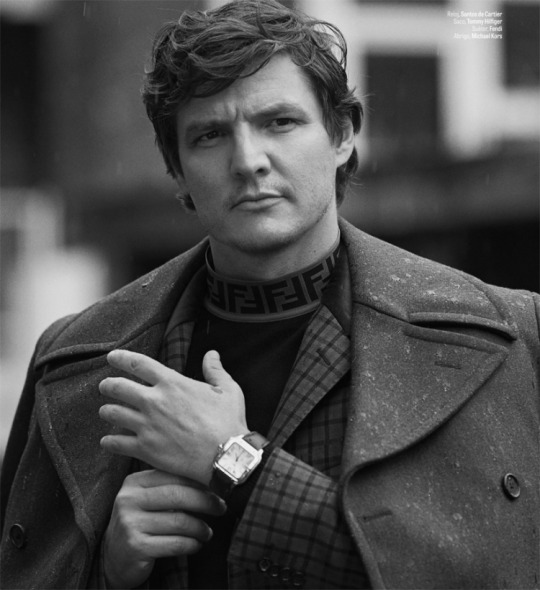
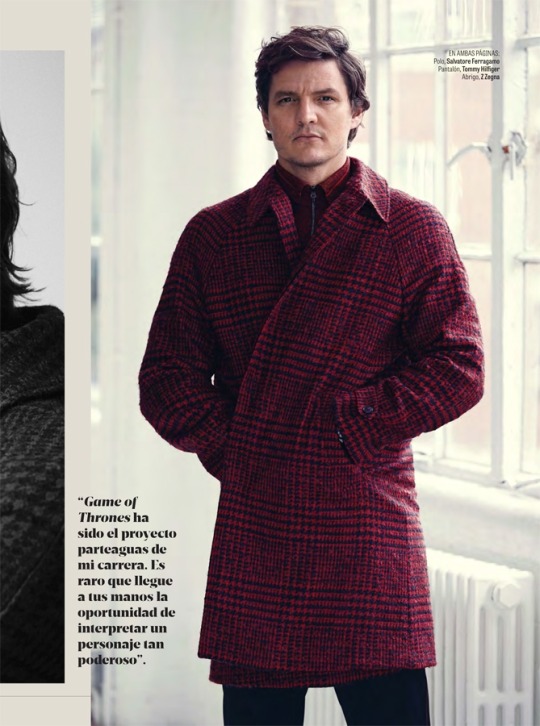


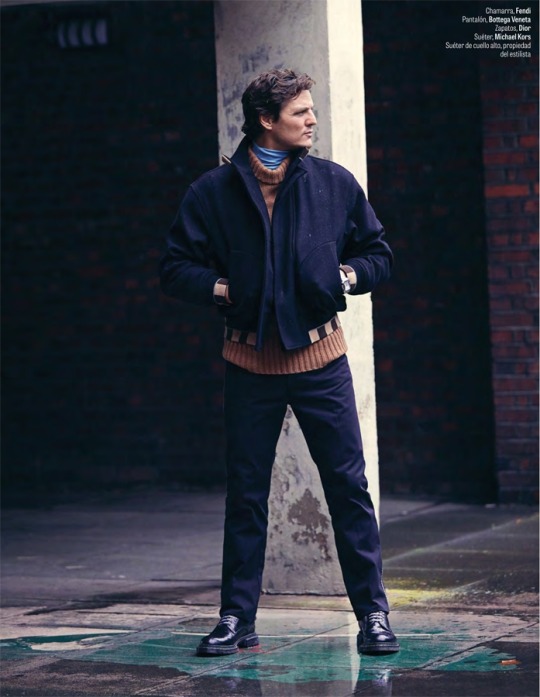


• Original Magazine Photos.


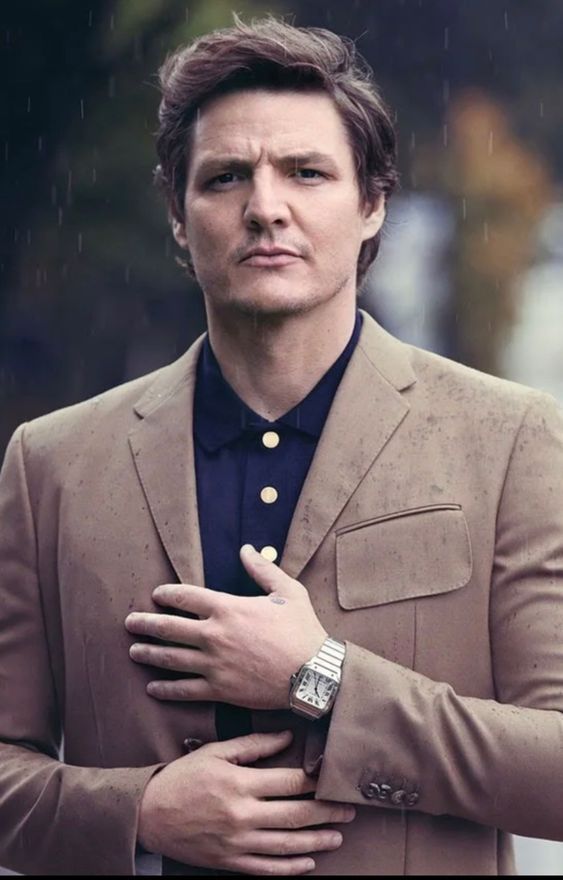





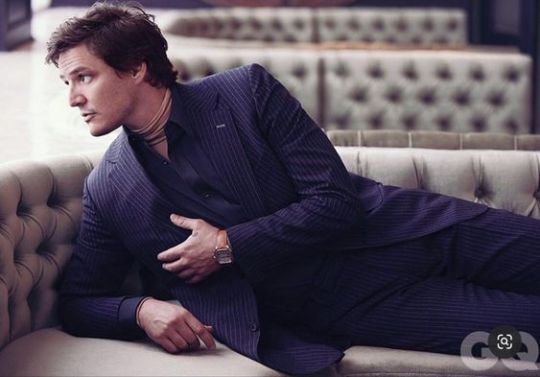

• Full Interview, originally translated from Spanish by myself. Spanish version below translated version.
A fan of Batman, a lover of men's fashion and a good watch, the story of Pedro Pascal is one of those rare in Hollywood. The truth is that, at 43 years old, the actor of Chilean origin is one of the most sought after at the moment. For example, his agenda is full of events and releases between now and the end of 2019 (the Wonder Woman sequel among them), and, of course, his recent association with Cartier.
When he was about to turn 40, Pedro Pascal decided to help a theatre student who was rehearsing for an audition, as the Chilean told host Seth Meyers on The Late Night Show. It was about a character named Oberyn Martell, who would be part of the fourth season of one of the most successful television series of all time: Game of Thrones. Without hesitation, Pascal also decided to appear at the casting because “I was a big fan. I read the script and it was amazing. Oberyn was about 30 years old, had eight daughters, was a womanizer. It was perfect for me!" he said on that occasion.
What he never saw coming is that not only would he keep the role, but from that moment on his discreet career would take a 180-degree turn, putting him in the spotlight and establishing him as one of the darling faces of Hollywood.
“It's very rare that you get the opportunity to play a character as powerful as mine in the series, a role that even the writers themselves love. Seven episodes were enough for my career to change completely,” he told us exclusively.
London was the perfect setting for us to meet the actor. That accessibility and charisma that radiates on screen, as well as on red carpets and galas, takes him beyond the spotlight, into his daily life. This makes him a peculiar guy and completely distinguishes him from many of his colleagues, who do not hesitate to climb onto the throne of divas.
Although perhaps this attitude is due to the fact that getting to where he is today was not an easy thing. His may seem like a story similar to that of many immigrants, and it was, at least in the beginning. During the first years of the Chilean military dictatorship, in 1976, his family went into exile in Denmark. A year later, his father received a job offer in the United States and so they arrived in North America. “I can tell you that being born in Chile helped me be who I am now. Having the perspective of another culture has always been something very special to me,” he says.
He grew from a child to a teenager as he moved between Texas and California. That was where he forged his childhood and personality, studying in public schools and waiting for the weekends to go with his father to San Antonio Spurs games and concerts, such as The Police. It was also thanks to his father that he discovered his greatest passion, cinema.
“He was an inveterate movie buff. One of the first movies I saw on the big screen was Superman. I remember going to the bathroom and when I came back I went into a different room. In the end, my parents found me asleep during the credits of Kramer vs. Kramer. My sister had to tell me what had happened in the superhero film and I did the same with the story of Dustin Hoffman and Meryl Streep,” he recalls with a laugh.
“Since we're talking about the histrionic section, which actor do you admire the most?” I ask him, and without hesitation, Pascal responds that he doesn't have one person he admires the most, “but I do have a list of people whose work I find phenomenal. I generally fall in love with interpretations. One of them is Philip Seymour Hoffman, one of the best of my generation and who was even like a father to a large community of my theatre friends in New York. Losing him was painful. Javier Bardem and Penélope Cruz are the most talented couple on the planet.”
Pedro Pascal's story becomes different when he begins to explore the world of acting. In the 90s, his family decided to return to Chile, but he chose to pursue his dream and enrol to study drama at the Orange County High School of the Arts and the Tisch School of the Arts at New York University. When he took flight to try his luck in entertainment in more than one variant, he was a waiter in the Big Apple, in addition to scoring a job as an exotic dancer in Madrid, as he declared to an Iberian television space...
But that is only anecdotal, for bringing down from the cloud (back down to earth) those who believe that everything is easy in a great race. His film resume began to include series titles such as The Good Wife, Homeland and Graceland, until the great HBO production Game of Thrones came into his hands. We all know the rest.
Given the immensity of a shoot like this, we cannot miss the opportunity to question what has been the most demanding project to date. The answer surprises us: “Each job has its rigor, but Narcos was very particular because it was filmed on location and not on an air-conditioned set. That is why the series is great, because the character of the Colombian landscape, its people and its places cannot be replicated,” he reveals.
There is no doubt that his big break, in terms of global recognition, came with the Pablo Escobar story according to Netflix. Agent Peña made Pascal what is known as “a popular actor” of those that fans imitate and desire. But to his resume it is also necessary to add Agent Marcus Pike in The Mentalist, as well as the films The Great Wall (2016), where he shared credits with Matt Damon and Willem Dafoe, and Kingsman: The Golden Circle, one of the films which was highest grossing of 2017.
Continuing with his career, last July he released The Equalizer 2, where he appears alongside Denzel Washington. His character is a former member of the army and part of the special operations team, which required him to train with an FBI officer and sniper.
But let's stop talking about the past and focus on the future, which looks quite promising for Pedro: Triple Frontier, a new film for Netflix (named after the border between Brazil, Paraguay and Argentina) is one of the projects that brings under the arm and in which actors of the calibre of Ben Affleck, Oscar Isaac, Charlie Hunnam and Garrett Hedlund also participate; and, of course, we will also see him in the highly anticipated Wonder Woman 1984. Pascal had already worked before, on a project that never reached the production phase, with director Patty Jenkins. That's why they called him to be part of the cast. “I can't tell you much about it, only that it will be spectacular. “That's all!” he reveals with a laugh. The film, which promises to be a blockbuster at the box office, is scheduled to be released in the winter of 2019.
“Since we are wandering in the field of comics, who is your favourite superhero?” I ask. “Batman! He's a temperamental bastard who doesn't follow the rules and who's also a millionaire," he replies. The Chilean also confesses to us that, in real life, his sister is his favourite heroine because "I wouldn't be where I am now if it weren't for her."
Thanks to this arduous schedule, there will be many red carpets that the actor will walk on between now and the end of next year. And that brings us to another chapter that he has had to write and that has to do with fashion. Pedro Pascal is one of the most scrutinized influencers today, he is one of those who are aware of the guidelines and follow them, but always with a personal note. There is also his presence in campaigns for brands in the luxury industry, such as now that he was signed by Cartier as their ambassador for one of their most precious pieces: the Santos watch.
“I am passionate about men's fashion. I have too many other vices for fashion to be one too (laughs), but it is a section that I deeply admire since it gives me the opportunity to express myself through it,” he clarifies. “I couldn't pass up the opportunity to represent a brand as beloved and elegant as Cartier, that's why I decided to accept this collaboration,” he continues.
But what are the elements that Santos and Pedro Pascal have in common? Without a hint of a doubt, the actor states that he would like to believe that it is as strong and elegant as said piece. “Watches are very symbolic and have different meanings for everyone. I like the individuality of wearing one. Maybe for someone it is the means to check the time, but for another it reminds them of that special person who gave it to them. It can express simplicity and extravagance, be barely noticeable or draw all the attention,” he shares. When talking about the basics of his closet, he says he is happy with an old pair of jeans and a T-shirt “that feels like pyjamas,” because he has learned from his characters that comfort is something basic.
Thanks to his origin, history and the way he conducts himself today, Pedro Pascal is a particular type, one of those that is rarely seen in the Mecca of Cinema.
______________
In Spanish as originally published:
Aficionado de Batman, amante de la moda masculina y de un buen reloj, la historia de Pedro Pascal es una de esas poco habituales en Hollywood. Lo cierto es que, a sus 43 años, el actor de origen chileno es uno de los más solicitados del momento. Para muestra está su agenda, repleta de eventos y lanzamientos de aquí a finales de 2019 (la secuela de Wonder Woman entre ellos), y, por supuesto, su reciente asociación con Cartier.
Cuando estaba por cumplir 40 años, Pedro Pascal decidió ayudar a un estudiante de teatro que ensayaba para una audición, según lo narró el chileno al presentador Seth Meyers en The Late Night Show. Se trataba de un personaje de nombre Oberyn Martell, el cual formaría parte de la cuarta temporada de una de las series de televisión más exitosas de todos los tiempos: Game of Thrones. Sin dudarlo, Pascal decidió también presentarse al casting pues “era un gran fan. Leí el guion y era asombroso. Oberyn tenía cerca de 30 años, ocho hijas, era un mujeriego. ¡Era perfecto para mí!”, aseguró en aquella ocasión. Lo que nunca vio venir es que no sólo se quedaría con el papel, sino que a partir de ese momento su discreta trayectoria daría un vuelco de 180 grados, poniéndolo en el candelero e instalándolo como uno de los rostros consentidos de Hollywood. “Es muy raro que llegue a tus manos la oportunidad de interpretar a un personaje tan poderoso como el mío en la serie, un papel que incluso los propios escritores aman. Bastaron siete episodios para que mi carrera cambiara completamente”, nos aseguró en exclusiva.
Londres fue el escenario perfecto para que nos encontráramos con el actor. Esa accesibilidad y carisma que irradia en la pantalla, así como en las alfombras rojas y galas, las lleva más allá de los reflectores, a su día a día. Esto lo convierte en un tipo peculiar y lo distingue por completo de muchos de sus colegas, quienes no dudan en treparse en el trono de divos. Aunque quizás esta actitud se deba a que llegar a donde se encuentra hoy en día no fue cosa sencilla. La suya puede parecer una historia similar a la de muchos inmigrantes, y lo fue, al menos en los inicios. Durante los primeros años de la dictadura militar chilena, en 1976, su familia partió al exilio en Dinamarca. Un año después, su padre recibió una oferta de trabajo en Estados Unidos y así llegaron a Norteamérica. “Te puedo decir que haber nacido en Chile me ayudó a ser quien soy ahora. Tener la perspectiva de otra cultura siempre ha sido algo muy especial para mí”, declara. Pasó de niño a adolescente mientras se movía entre Texas y California.
Ahí fue donde forjó su infancia y personalidad, estudiando en colegios públicos y esperando los fines de semana para ir con su padre a los partidos de los San Antonio Spurs y a conciertos, como el The Police. Fue también gracias a su papá que descubrió su más grande pasión, el cine. “Él era un cinéfilo empedernido. Una de las primeras cintas que vi en la pantalla grande fue Superman. Recuerdo que fui al baño y al regresar me metí a una sala diferente. Al final, mis padres me encontraron dormido durante los créditos de Kramer vs Kramer. Mi hermana me tuvo que contar lo que había ocurrido en el filme del superhéroe y yo hice lo propio con la historia de Dustin Hoffman y Meryl Streep”, rememora entre carcajadas. “Ya que tocamos el apartado histriónico, ¿a qué actor admiras más?”, le pregunto, y sin dudarlo, Pascal responde que no tiene una persona a la que admire más, “pero sí una lista de personas cuyo trabajo me parece fenomenal. Generalmente me enamoro de interpretaciones. Uno de ellos es Philip Seymour Hoffman, uno de los mejores de mi generación y quien incluso fue como un padre para una gran comunidad de amigos míos del teatro de Nueva York. Perderlo fue doloroso. Javier Bardem y Penélope Cruz son la pareja más talentosa sobre el planeta”.
El relato de Pedro Pascal se hace diferente cuando empieza a conducirse por el mundo de la actuación. En los años 90, su familia decidió volver a Chile, pero él optó por perseguir su sueño y matricularse para estudiar arte dramático en la Orange County High School of the Arts y la Tisch School of the Arts de la New York University. Cuando emprendió vuelo para probar fortuna en eso del espectáculo en más de una variante, fue camarero en la Gran Manzana, además de anotarse un empleo como bailarín exótico en Madrid, según ha declarado a un espacio televisivo ibérico… Pero eso es sólo anecdótico, para bajar de la nube a quienes crean que todo es fácil en una gran carrera. Su currículum fílmico comenzó a anotarse títulos de series como The Good Wife, Homeland y Graceland, hasta que llegó a sus manos la gran producción de HBO Juego de Tronos. El resto, lo conocemos todos. Ante la inmensidad de un rodaje como éste, no podemos dejar pasar la oportunidad de cuestionarlo cuál ha sido el proyecto más demandante a la fecha. La respuesta nos sorprende: “Cada trabajo tiene su rigor, pero Narcos fue muy particular porque se rodó en locaciones y no en un set con aire acondicionado. Es por eso que la serie es grandiosa, porque el carácter del paisaje colombiano, su gente y sus lugares no se pueden replicar”, revela.
No hay duda de que su gran oportunidad, en términos de reconocimiento global, llegó con la historia de Pablo Escobar según Netflix. El agente Peña hizo de Pascal lo que se conoce como “un actor popular” de esos que imitan y desean los y las fans. Pero a su hoja de vida también es necesario sumar al agente Marcus Pike en The Mentalist, así como los filmes La gran muralla (2016), donde compartió créditos con Matt Damon y Willem Dafoe, y Kingsman: El círculo dorado, una de las películas más taquilleras de 2017. Siguiendo con su carrera, el pasado julio estrenó The Equalizer 2, donde aparece junto a Denzel Washington. Su personaje es un soldado ex miembro de la armada y parte del equipo de operaciones especiales, lo que le exigió entrenar con un oficial y francotirador del FBI.
Pero dejemos de hablar del pasado y centrémonos en el futuro, el cual luce bastante prometedor para Pedro: Triple Frontier, una nueva película para Netflix (que recibe ese nombre por la frontera entre Brasil, Paraguay y Argentina) es uno de los proyectos que trae bajo el brazo y en el que también intervienen histriones del calibre de Ben Affleck, Oscar Isaac, Charlie Hunnam y Garrett Hedlund; y, por supuesto, también lo veremos en la esperadísima Wonder Woman 1984. Pascal ya había trabajado antes, en un proyecto que nunca llegó a la fase de producción, con la directora Patty Jenkins. Por ahí vino el que lo llamaran para ser parte del elenco. “No les puedo decir mucho al respecto, sólo que será espectacular. ¡Eso es todo!”, nos revela entre risas. La película, que promete ser un trancazo en taquilla, está prevista para ser estrenada en el invierno de 2019. “Ya que deambulamos en el terreno de los cómics, ¿quién es tu superhéroe favorito?”, lo cuestiono. “¡Batman! Es un bastardo temperamental que no sigue las reglas y que además es millonario”, responde. El chileno nos confiesa también que, en la vida real, su hermana es su heroína favorita pues “no estaría donde estoy ahora si no fuera por ella”.
Gracias a esta agenda tan ardua, serán muchas las alfombras rojas que el actor pisará de aquí a finales del próximo año. Y eso nos lleva a otro capítulo que le ha tocado escribir y que tiene que ver con la moda. Pedro Pascal es uno de los influenciadores más escrutados en la actualidad, es de los que están al tanto de las pautas y las siguen, pero siempre con una nota personal. También está su presencia en campañas de marcas de la industria del lujo, como ahora que fue fichado por Cartier como su embajador para una de sus piezas más preciadas: el reloj Santos. “Me apasiona la moda masculina. Tengo muchos otros vicios como para que la moda lo sea también (ríe), pero es un apartado que admiro profundamente ya que me da la oportunidad de expresarme a través de él”, nos aclara. “No podía dejar pasar la oportunidad de representar una marca tan querida y elegante como Cartier, por eso decidí aceptar esta colaboración”, continúa. Pero, ¿cuáles son los elementos que tienen en común el Santos y Pedro Pascal? Sin un atisbo de duda, el histrión asevera que le gustaría creer que es tan fuerte y elegante como dicha pieza. “Los relojes son muy simbólicos y tienen significados diferentes para cada quien. Me gusta la individualidad de usar uno. Tal vez para alguien es el medio para consultar la hora, pero a otro le recuerda a esa persona especial que se lo regaló. Puede expresar simplicidad y extravagancia, ser apenas perceptible o llamar toda la atención”, nos comparte. Al hablar sobre los básicos de su armario, se dice conforme con un viejo par de jeans y una T-shirt “que se sienta como si fuera pijama”, pues de sus personajes ha aprendido que la comodidad es algo básico.
Gracias a su origen, historia y la forma en que se conduce hoy en día, Pedro Pascal es un tipo particular, de esos que pocas veces se ven en La Meca del Cine.
Jett's Pedro's Shoots Masterlist
🖤
#pedro pascal#jose pedro balmaceda pascal#pedro pascal shoots#pedro pascal interview#pedro pascal photo shoot#pedro pascal photo#pedro pascal image#pedro pascal speaks#pedro pascal talks#pedro pascal fandom#pedro pascal photograph#pedro pascal magazine
15 notes
·
View notes
Text
[ENG translation] Rock'n'roll in the blood

An interview with the Guštin family in Slovenian newspaper Delo, originally published 6.2.2022.
Original article is available here for Delo subscribers. Original article written by Agata Rakovec Kurent for Delo; photos by Jože Suhadolnik; English translation by a member of Joker Out Subs, native proof reading by IG GBoleyn123.
If you repost quotes from the interview, please link back to this post! And if you repost the photos, do not crop out the photographer credit.


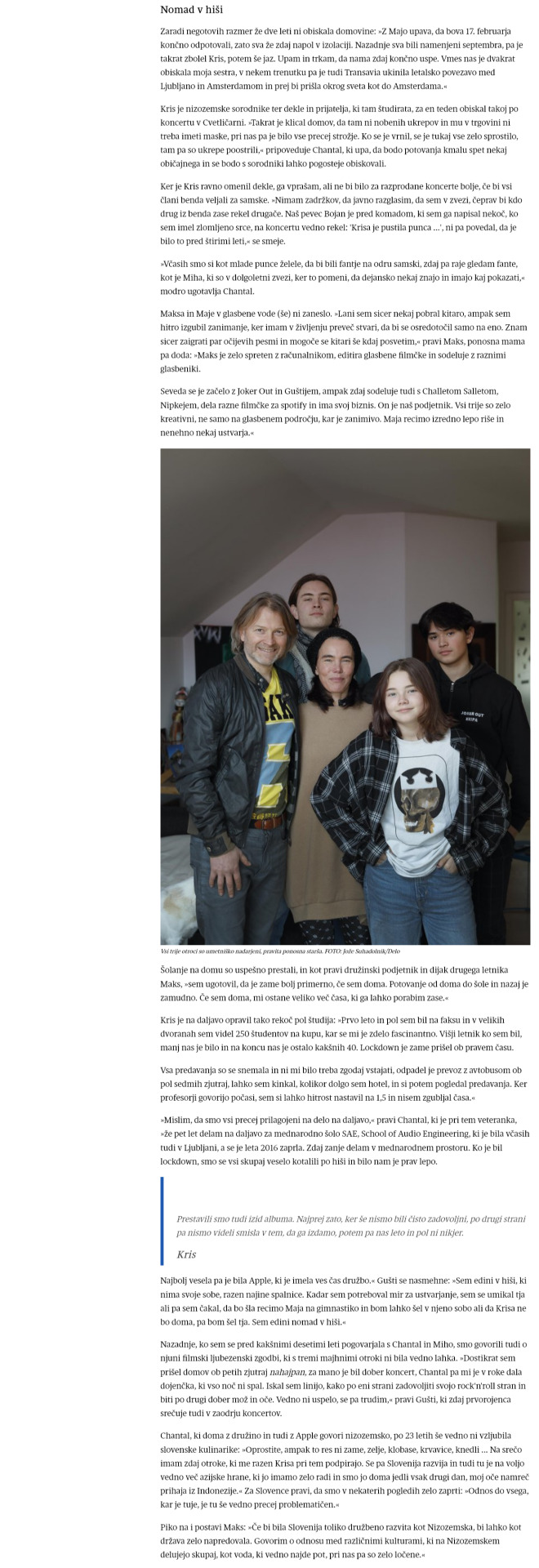
Next Saturday (12.2.2022), Gušti and young singer Leyre will present themselves at EMA¹, but first, we visited him and his family in Bežigrad².
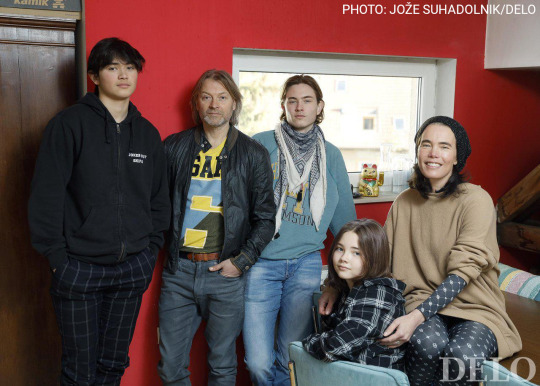
The Guštins (right to left) Chantal, Maja, Kris, Miha and Maks, were all happily rolling around the house during lockdowns and having a pretty nice time. PHOTO: Jože Suhadolnik/Delo
Just as I was looking at the names on the doorbells and considering calling Gušti about whether I was even at the right address in Bežigrad, the last of the five family members, Kris, came hurrying home. Actually, there are six family members, alongside Chantal and Gušti and their kids Kris, Maks and Maja, there is also Apple the dog, who greeted me with loud barking. Dogs remain with their parents even when the kids start to leave the nest, we agreed as we sat down at a big wooden table.
For musician Gušti and Chantal Van Mourik from the Netherlands, everything started with a teenage seaside romance. After that, nothing happened for ten years, but when Gušti wrote Big Foot Mama's big hit Črni tulipan, he could not imagine anyone other than his teenage love in the music video. He invited her to the filming, she came, and the rest is history. Three decades and three children later, their first-born Kris is following his dad's footsteps as the guitarist of Joker Out, the most popular band among the Slovenian youth right now.
We all know Miha 'Gušti' Guštin as Big Foot Mama's guitarist and the writer of their biggest hits. 20 years ago, he went his own way, musically, and recorded his first solo album Dolce Vita, where his successful collaboration with Polona Kasal³ started. He also did a memorable duet with Zagreb resident Ema Gagro, but let's start at the end.
If not for the good song, then for the laughter…
Next Saturday, we'll see something completely new at EMA, as he has joined forces with young singer Leyre⁴. How did they find each other? "People have been hinting that I should sign up for EMA for years and years and I never did, but this time I told myself that I would sign up if I found a truly good vocalist.
Producer Žare and I started looking, and through Dušan Obradinovič - Obre, drummer of the band Dan D, we got to Leyre. Leyre is Spanish by birth, she came to Slovenia when she was two years old. She's from Novo mesto, she is 19 years old and studies in Ljubljana. It's a one-time musical collaboration, just for EMA, so that I can finally have an answer for everyone who has been asking me for years: 'Why don't you sign up once?'" explains Gušti.
His family, especially Chantal and Kris, were initially pretty sceptical about this endeavour. Because it's a circus, because it's always said to be "rigged"?
"No, not because it's rigged, but because I thought that dad had slight misconceptions about what you can achieve with a song at EMA. My reservation was that if you go to EMA with a bad song, it falls through, no one remembers it, and it all doesn't seem worth the effort to me. Of all the songs that have been on EMA, 95 percent have sunk into oblivion, and I didn't want something like that to happen to dad.
Once we talked things through, however, and especially once I heard the song, I supported him, just like mum did. If you go to EMA, you have to win, otherwise it all passes you by, that's my opinion," says Kris.
Is Eurovision as much of a circus in the Netherlands as it is here? "It used to be, but now it's not like that anymore. For the past few years, they haven't even had a pre-selection. There's a committee that picks the performer who then represents the country at Eurovision. As for Miha, I think it's great that he signed up. The song is fantastic and the singer is truly exceptional.
On the other hand, I find it all amusing. I know Miha, and Miha is not about make-up and image, but with EMA all of that matters, the sound and the look are a package and it's absolutely not just about the song. That part, the fact that Miha is going to clothes fittings, is greatly amusing to everyone in the family," Chantal laughs.

Next Saturday, they will all keep their fingers crossed for Gušti and Leyre at EMA. Photo: Jože Suhadolnik/Delo
So did Gušti have a particularly shiny tuxedo made for EMA? "The styling will absolutely be appropriate for the event. I turned to a stylist, we just ordered everything, but I will wear a nice, elegant suit, which will still be rock chic."
The youngest members of the family, Maks and Maja, are smirking as their dad talks about rock chic. How interested is their generation in EMA anyway? "I don't know, I never asked my friends about it," is the concise answer of the youngest, seventh grader Maja, who is great at artistic gymnastics, as well as being the most artistically talented in the family.
"To be honest, I don't watch it and I'm not very interested in these things, but I will definitely watch it when dad performs, if not for the good song, then for the laughter," Maks' honesty makes everyone present laugh loudly.
History is repeating itself
Kris, who just graduated in chemical engineering, was not too enthusiastic about Big Foot Mama or Gušti's later solo projects at first.
"Everything changed when I got involved in music myself, when the summer before my first year of high school, I took up the guitar. At ten or twelve years old, I listened to what was playing on the radio, and that wasn't like the music that dad was making, so his music didn't interest me. In time, when I started discovering more complex music, rock, I started to enjoy his stuff.
My friends, who I'm still in a band with, introduced me to Big Foot Mama's music and tried to convince me that Črni tulipan was a totally awesome song. Then, for a while, I was like 'Oh, awesome, dad!' At first I didn't even care that he had been with the Big Foots, then I couldn't believe that he had left the band, it seemed horrible to me, but now I completely understand why he did it, and I really like what he's done since leaving," he tells us.
Chantal used to watch fans screaming in front of Big Foot Mama's stage, now she can relive those scenes at her son's concerts. "The screaming never bothered me, I always thought it was fun and interesting to watch. Nowadays, Miha and I often talk about how we're experiencing the same moments from another perspective.
Where Miha used to stand on stage, Kris now stands, where I used to stand in front of the stage as his girlfriend, we now stand together, but everything else is the same - the music, people screaming, girls going crazy, all that. I think that's great and I couldn't be more proud of Kris, of his band, and of course also of Miha and everything they achieved back then. We do sometimes truly feel like history is repeating itself, though."
However, some things did change from the time Gušti was starting out in music to today. Social media arrived, and these days, if you're not on it - you don't exist. "My kids and wife help me with social media, I'm not very good at it. Before they help me out, they always explain how clueless I am and that I should engage with it more and get with the times.
I'm not interested in these things, I can't find my footing in this world, but I know that it has to exist. I have Instagram, Facebook, and after they get done criticising me, everyone helps me out," says Gušti, while Chantal adds: "We have to help him to prevent something worse."

Apple the dog will also keep her paws crossed for Gušti at EMA next Saturday. Photo: Jože Suhadolnik/Delo
Joker Out take care of the social media themselves; "we have the natural advantage of having grown up with this, and it is unfortunately an integral part of the music scene today. We couldn't achieve much without Instagram. Well, after Facebook, Instagram is also almost 'out' now, so we have to start thinking about TikTok, which seems horrible to me," Kris tells us.⁵
His younger brother Maks is also part of Joker Out's story as a roadie. "It started with me helping the roadie, bringing water, putting away the cables and so on. Of course they didn't pay me, it was all in the family. Then I took over the merch, selling T-shirts and other things, which is pretty fun, it's a lot of work, but it pays off," he tells us, while Kris laughs, adding sarcastically: "Well, it doesn't pay off for him, because we still don't pay him."
Joker Out released an album (Umazane misli) recently, while Gušti says about his new one: "To me, having released quite a few albums already, the most important thing is that there is music. And there is music, I release a single or two every year, and once there's enough of them, there will also be an album. When that will happen, I don't know. Since I've never sung, I'm still figuring out the best direction for my vocals.
To put it bluntly…
Even before the pandemic, which devastated our music industry as well, Gušti and Siddharta's singer Tomi Meglič already found a recipe for these weird times, a cycle of 1on1 concerts: "During the Covid times, Tomi and I had 30 gigs, which was probably by far the most among all Slovenian performers. Seated, distanced gigs were possible. They were very well-attended before Covid already, and then it just kept going.
To put it bluntly, we were lucky bastards. It was just a pity that we couldn't put as many seats up for sale as usual and the pay reflected that, but at least we could play." I already joked with Tomi in a recent Nedelo interview that the format suits Siddharta's and Gušti's aging audience, who - judging by myself - finds it harder and harder to stand for two hours and longer. Gušti laughs: "It's true that it's mostly people our age who come, faithful fans of Siddharta and Big Foot Mama, there aren't many young people."
Putting together the repertoire gave them a lot of trouble, because together - they have too many hits. "At the beginning, the format was 14 songs with an encore, seven of his, seven of mine, which we immediately filled up. I chose his hits, he chose mine. The problems are arising now when we should freshen it up, but we don't want to lose any of the songs." At the end of March, the 31st, Gušti is also planning a solo concert in SiTi Theatre with a new team. "I will do a half unplugged, half electric version, and I will keep that up afterwards."
Unlike Gušti, the Jokers were hit by the crisis at the start of their musical journey. "At first, we planned to release the album on the 1st of April 2020, with a concert in Cvetličarna following on the 9th of April. A month before, everything closed down and fell apart. We rescheduled everything for May, then for October, and finally for next October. We also rescheduled the album release. Firstly because we weren't completely happy with it yet, and we also didn't see the point in releasing it, only us not to be seen anywhere for a year and a half.
Then people would come to a concert and wonder where anything new was, because they would already know everything. In a way, we were happy to delay everything. That way, a lot of the pressure was released, or stretched out over a longer period of time.
Covid seemed very inconvenient at first, we felt like we fell off the horse, but when we look back, it was a very productive time for us. We made some radical changes, in the music, in the line-up and in our way of thinking, and it shows. The tension was mounting before the concerts in Cvetličarna⁶ and that's why they were much more cathartic in the end," says Kris.
They have just renovated their rehearsal space and started working on the new album, which they have promised for September. That is also when they're planning a big concert in Križanke, before that they have summer concerts, including some outside of our borders. "We will try to get a gig in Serbia, and we will also release a song in Serbian."
The damage that was done to the music industry is huge, despite some bright exceptions. "The consequences will drag on for years. A huge part of the industry fell apart, and many found work elsewhere. Not musicians, not the people we see on stage, but the people in the background, as well as those who worked for publishers, in the distribution chain..." Chantal reflects.
A nomad in the house
Because of the uncertain situation, she hasn't visited her homeland for two years. "Maja and I are hoping that we can finally travel there on the 17th of February, so we're already half in isolation. The last time we were planning to go there was in September, but then Kris got sick, and then I did too. I'm hoping and knocking on wood that we can finally do it. In the meantime, my sister visited us twice, and at one point, Transavia also cancelled the flight connection between Ljubljana and Amsterdam, and I would've sooner made it around the world than to Amsterdam."
Kris visited his Dutch relatives, as well as his girlfriend and a friend who are studying there, for one week immediately after the Cvetličarna concert. "At that time, he called home to say that there were no restrictions there and he didn't need to have a mask on at the store, meanwhile here, everything was a lot more strict. When he came back, things relaxed a lot here, while over there the restrictions got stricter," says Chantal, who hopes that travelling will soon be something regular again and they will be able to visit their relatives more.
Since Kris just mentioned his girlfriend, I ask him whether it wouldn't be better for sold-out shows if all members of the band appeared single. "I have no reservations about publicly saying that I'm in a relationship, even though other band members might say differently. Our singer Bojan would say 'Kris got dumped by his girlfriend..." at every concert before a song I wrote when I once had a broken heart, but he didn't mention that it was four years ago," he laughs.
"As young girls, we used to wish that the boys on stage were single, but now I prefer to watch guys like Miha who are in a long-term relationship, because it means that they actually know something and have something to show for themselves," Chantal concludes wisely.
Maks and Maja have not been drawn into the music world (yet). "I did kind of pick up the guitar last year, but I quickly lost interest because I have too many things going on in my life to focus only on one. I can play a few of dad's songs, and I might turn to the guitar again at some point," says Maks, and his proud mum adds: "Maks is very skillful with the computer, he edits music clips and is working with various musicians.
Of course it started with Joker Out and Gušti, but now he's also working with Challe Salle⁷, Nipke⁸, he's making various videos for Spotify and has his own business. He's our businessman. All three of them are very creative, not only in the field of music, which is interesting. Maja, for example, draws incredibly well and is constantly making art."

All three kids are artistically gifted, say the proud parents. Photo: Jože Suhadolnik/Delo
They handled home schooling successfully, and as the family businessman and second year high school student Maks says, "I've found that being at home is better for me. The trip from home to school and back is time-consuming. If I'm at home, I have a lot more time left that I can use for myself."
Kris finished practically half of his studies remotely: "For the first year and a half, I was at the faculty and saw 250 students in one place in large halls, which was fascinating to me. With each new year I progressed to, there were fewer of us, and at the end there were about 40 of us left. Lockdown came at the right time for me.
All the lectures were recorded and I didn't have to get up early, I didn't have to take the bus at half past six in the morning, I could sleep in as long as I wanted and then watch the lectures. Because the professors speak slowly, I could set the speed to 1.5 and I wasn't losing time."
"I think we're all well-adapted to remote work," says Chantal, who is a veteran of it, "I've been working remotely for five years for the international school SAE, School of Audio Engineering, which used to be in Ljubljana as well, but shut down in 2016. Now I work for them in the international space. During lockdown, we were all happily rolling around the house and we were having a pretty nice time.
The happiest one, however, was Apple, who had company all the time." Gušti smiles: "I'm the only one in the house who doesn't have his own room, except for our bedroom. Whenever I needed peace to create, I retreated there, or I waited for example for Maja to go to her gymnastics practice so I could go to her room, or for Kris to not be home so I could go there. I'm the only nomad in the house."
When I last spoke to Chantal and Miha about ten years ago, we also talked about their filmesque love story which, with three small children, wasn't always easy. "I often got home at five in the morning, hyped up, with a good concert behind me, and Chantal placed a baby who hadn't slept all night in my arms. I was searching for that line, how to satisfy my rock'n'roll side on the one hand, and be a good husband and father on the other. I didn't always succeed, but I'm trying," says Gušti, who now sees his first-born backstage at concerts too.
Chantal, who speaks Dutch to her family as well as to Apple at home, has not grown fond of Slovenian cuisine even after 23 years: "I'm sorry, but that is really not for me, cabbage, sausages, blood sausages, dumplings… Luckily I now have kids who, apart from Kris, support me in this. Slovenia is developing though, and you can also get more and more Asian food here, which we really like and used to eat every other day back home, since my dad is originally from Indonesia." She says that Slovenians are very close-minded in some respects: "The attitude towards anything foreign is still pretty problematic here."
Maks adds the finishing touch: "If Slovenia was as developed socially as the Netherlands is, it could make a lot of progress as a country. I'm talking about the relationship between different cultures, who work together in the Netherlands, like water that always finds a way, while here, they are very separated."
¹EMA is the Slovenian national selection for Eurovision
²Bežigrad is a neighbourhood in Ljubljana
³Polona Kasal is a Slovenian singer; her and Gušti performed as a duo called "Gušti & Polona" for a few years
⁴You can watch Gušti and Leyre's performance at EMA 2022 here.
⁵Joker Out have, in fact, had to start thinking about TikTok since then. As you probably know, you can find them on TikTok here.
⁶You can watch the Cvetličarna concert with English subtitles here on our YouTube channel.
⁷Challe Salle, real name Saša Petrović, is a popular Slovenian hip hop singer, known for being very focused on being a good role model for his younger fans. One of his big hits was Lagano.
⁸Nipke, real name Boštjan Nipić, is a popular Slovenian rap/hip hop singer. He's part of the Dravle Records publishing company and collaborated with Bojan in the song Jst mam sam sebe rd.
If you repost quotes from the interview, please link back to this post! And if you repost the photos, do not crop out the photographer credit.
70 notes
·
View notes
Text
i know they exist, but i haven't been able to find any posts about writing image ID's while searching (tumblr's search function is, as always, busted), so i'm going to try my best to give folks a few pointers about writing them. full disclaimer that i am not visually impaired, nor do i use a screenreader, so let me know if anything here needs to be changed, and please feel free to add on if you are vi!
- first off, do not alter the text of an image description. do not italicize/bold it, do not make it a different color, do not make the text any smaller, and do not put it in a difficult to read font. all of these things still make it inaccessible/hard to read. these don't typically interfere with a screenreader, but not all visually impaired people use them.
- keep the text alongside the image, rather than under a cut or below a long caption. it makes it easier to access quickly, and if you delete your blog/change your url, people will not be able to access the text under the cut from a reblog.
- keep the description objective. do not say things a long the lines of "a beautiful painting" or "a funny meme". rather, use descriptive, objective words ("an intricate oil painting", for example).
- something is better than nothing. two sentences summarizing your image is leagues better than leaving it blank. it doesn't have to be a grand, overtly detailed description. i personally can't always write detailed descriptions, due to fatigue and other disabilities. again, something is better than nothing!
- from my knowledge, while details are good, it isn't always necessary to describe every single detail of a post, especially in more detailed pictures. describe what's important, should be conveyed, or is notable about the picture (colors, lighting, poses, actions, characters, dialogue, scenery, etc.). it's good to be detailed and convey the core ideas, but it doesn't have to pick apart every single bit.
- from my knowledge, it's best to try and avoid breaking the description up into paragraphs. when it comes to some screenreaders, people will have to tap on each individual paragraph. instead, it's usually better to divide descriptions of multiple photos in a post with a / or by simply saying "the first image, the second image, etc".
- a description should not be put exclusively in alt text. tumblrs alt text feature doesn't always function well, and again, not all visually impaired people use screenreaders. without a description outside of the image, people will frequently not be able to access it.
- when adding an id in alt text, you do not need to start it with "id" or "an image of", but rather with what type of image it is (ie. a painting, a photograph, etc.). from my knowledge, screenreaders will automatically start with saying it is an image
- if someone writes a description for your post, PLEASE add the id to your ORIGINAL post. we WANT you to do that. if you do, then people finding the post in the tags will see the accessible version. adding it in reblogs alone means that there are going to be many versions of the post without the description. often times, people writing descriptions do not care about credit (though i suppose it doesn't hurt), we just want your post to be more accessible.
- don't be afraid to ask for someone to write a description for you, if you can't do it yourself. you can also ask folks more used to writing them to help you get started, and feel free to model your id's after someone elses. it's okay! please do it!
127 notes
·
View notes
Text
Gonna cap off the Japan book haul posts with some odds and ends picked up at random bookstores throughout Tokyo, as opposed to one big stash of Jimbocho or Comiket goods . First off - behold, the complete collection of officially published books about FLCL:

I already owned several of these - of course the FLCLickNoise (bottom-right) interview book was the start of this mini-project. Bottom-center is the FLCL Archives - which was actually printed in English *extremely* briefly, but it goes for way too much, so I imported the Japanese version. That book is the "supplemental 101", with settei/character design sheets, concept art, production documents, and even those original scripts and project proposals which I have blogged about in the past. Top-center is FLCLism, which is more like a conceptual art book - a grab-bag of promotional art, production art, random photographs, and interviews with some of the team. I will do write-ups of those interviews someday!
And rounding out the collection from Mandarake Akihabara, we have in the top-right the Groundwork of FLCL. This is much more of "live" production book - lots and lots of genga/key frames, sketches with timing sheets, e-conte/storyboards, etc. These books are always a little funny, because its not like the median person will study these or anything, and they don't work as an artbook, at least not cleanly. But as a preservation of the process they have a beauty no artbook can have - something you own for the total package as opposed to any specific page.
The bonus book on the left is The Art of Tadashi Hiramatsu, a longtime GAINAX animator, and Animation Director for episodes 1, 3, & 6 of FLCL. So not technically part of the collection but certainly deserving of some extra credit. He was a pretty core part of the team for the show - Tsurumaki names him frequently in FLClickNoise when discussing an approach to a scene (Though I rank him below people like Yoji Enokido or Imaishi). He also loves Mamimi like me and this book has some great Mamimi art - as well as a ton of Kare Kano art, where he was the character designer and Chief Animation Director.
As always, if anyone wants any deeper dives into some of the books let me know, but that is probably long enough for now. Lets see what else I can gather up...
7 notes
·
View notes
Text
a note about sources: when i reblog things that do not have a source or credit in the caption, it is because i have checked out the blog that originally posted it and determined that the OP appears to be the originator of the image (artist/photographer/maker). obviously i'm not perfect and sometimes my assessment is wrong or sometimes i don't check as well as i should, but if you ever see something i've reblogged that appears to have a questionable source feel free to send me an ask (or dm if we're mutuals).
how to identify stolen images: it is typically not very difficult to tell whether you are looking at the blog of an artist or photographer who posts their own work with no caption, or a reposter who uploads images taken from pinterest/reddit/instagram/other blogs without citing a source. blogs run by the artist or photographer will generally include the name of the creator as the blog title or url or in the description, or at the very least have a recognizable "digital identity" to which their work is attached. their work will also typically be consistent in style, technique, and subject matter. also many (though not all!) original artists/photographers will tag their original uploads of their work as "my work", "my art", "original photography", or something similar that implies creation of the image. most third party uploaders will either include very few tags solely for organization in order to preserve their aesthetic, OR tag with a big pile of buzzwords but generally avoid ones that directly claim authorship of the image. some will even add "artist credit" by putting the artist's name in the tags of the original post (not a good way to add credit btw since those don't carry over to reblogs and thus an image can circulate for years with no source, and also if the OP deactivates or tumblr breaks the original post view function again then the source is just gone forever). also the tags "found", "upload", "upl" etc (when combined with a post that lacks a source/artist credit) are often indicators that this is a stolen image pulled from somewhere else rather than an upload directly from the photographer or artist.
if you're still not sure whether a blog is being run by an artist or just a particularly choosy reposter who is maintaining a very consistent aesthetic/persona while posting other people's work with no source, save one of their images to your device and try reverse image searching using tineye, google reverse image search, or labnol (website that allows you to use google reverse image search on mobile, which google does not allow by default for some stupid reason). those all have different areas of expertise so if you have trouble with one, try the others. this is how i have found nearly all the artist credits i have added to other posts in my "source added" tag. sometimes you need to really investigate the results to find the original source. duplicate results does not always equal stolen - you may be able to find the same image posted by the same creator across multiple platforms (in which case you'd expect the digital identity of the poster to match across all those platforms) or it may have been stolen and posted elsewhere AFTER the original post you are looking at, but if you're seeing other instances of the same image being posted across the web that are older than the post you're looking at, and they don't appear to all be posted by the same person, you're probably looking at a stolen repost. this is especially true if the blog posting it is mostly faceless and/or posts things of an inconsistent style and subject matter. even photographers who remain intentionally faceless will still post a large number of similar-looking photos - photographers don't generally go out to take one photo and go home, they take a large number of photos in the same general area under the same lighting conditions, then sift through to edit and post the best ones. you should be able to discern some kind of generally unified sense of place from a photographer's portfolio.
of course these aren't hard-and-fast rules, just general patterns to look for if you care about identifying sources. thank you for coming to my ted talk
#in case some people are unsure how to tell a repost from an original artist or photographer posting their own work#ref#image sources#p.s. pinterest is also not a valid source unless it's linking to specific pin that was#uploaded to pinterest by the creator.#this should be obvious but to many people it apparently is not.#long post
4 notes
·
View notes
Note
Has Tessa ever said what her favorite costume was since retiring/the comeback? I know she once said her original Carmen costume but that was I think in 2016? I’d love so much to hear her talk more about her packaging and what she enjoyed wearing the most!
So, you didn’t know it but this innocent question has sent me down a very odd path lol. I remembered her liking a dress she wore in 2006; wouldn’t have remembered her Carmen answer off the top of my head but recalled it from your question; and realized that due to the sheer number of interviews or appearances she’s done later in her career, that there is a lot that I don’t know without research.
So off I went, and a quick Google search led me to some answers about Carmen. The dress from 2006 was in my brain already so I didn’t try to dig very hard for that. And I was hitting a wall about anything in more recent years.
My original searches on my own blog were fairly useless, because tumblr, but I when I went to find my links to 2006, I found this answer to a question on Tessa’s costumes from 2020.
Ironically, in comparison, this time I had no trouble with the Carmen answer - threecupsfull has a great compilation of that answer, which came from the post-Sochi but pre-comeback era. One of her answers also alluded to the bustle dress of 2006 (or so I thought but I’ll gee to that in a moment!).
The second time was in my own 2020 answer, because the 2009 compulsory Paso Doble dress link is also broken. The original link name was basically that it was to an interview with The Loop, a now defunct branch of CTV, and in which she credits her mom as one if her style icons; further research showed that the interview was from 2018 (the story linked here is about her Ellen jumpsuit, but further in is the same broken link that I have to her costume comment). So now I’m extra glad that I (or someone else) copied down what she had to say about that costume!
I was reminded all over again how many pictures/interviews/videos of VM have been lost to a general search with broken links and removed content. Not the first time or the last time I’ll lament that.
Meanwhile, though I always recalled the bustle costume, I am thrown all over again about the interview in which she stated it. I think it may have been debated years ago, because she says it was their first year in junior, for the OD. That dress was her polka dots, and the program, Tutti Frutti, certainly matches her description of fast footwork, but the dress to me, doesn’t have a bustle - it has a crinoline. (Looking at the back, there could be a little more fabric there, so she could have been correct but just not in how I think of a bustle.) I have spent a long time believing she meant her 2006/2007 dress, which she wore for compulsories, because it had a bustle - but it matches nothing else of her description, and given when she did the interview, is not something she would mix up with something from earlier seasons. So I’ve been wrong for ages lol!

Tears on my Pillow/Tutti Frutti OD, 2003/2004. You can just make out the extra fabric at the back, but the entire skirt had a blue crinoline for a fun thematic costume.

Golden Waltz compulsory dress, 2006/2007. The dress I have assumed through some incorrect years, with a distinct bustle at the back, appropriate for a waltz. Not on Tessa’s list, lol.

Carmen, 2012/2013, with the ‘deep V and lace sleeves and ruffles’. Also, an exposed back and again, some extra fabric at the rear of the skirt.
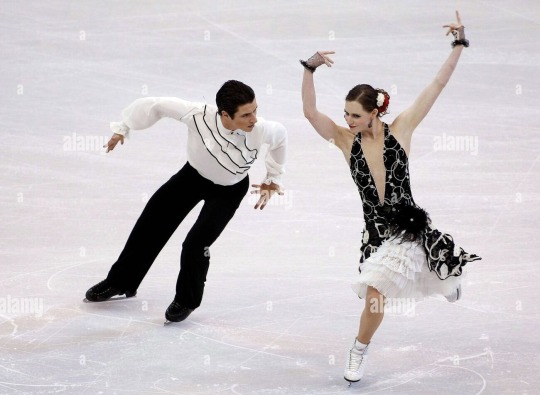
Paso Doble compulsory, 2009. A dramatic, crinolined skirt, another flower embellishment, deep V and exposed back. Ignore Scott’s horrible shirt lol (genuinely one of my least favourite Scott costumes for this dance).
I imagine her favourite costumes might be influenced by factors that we don’t really take into consideration - was it good memories associated with it, was it comfortable, was it dramatic? Whereas I think most of us are more about if it was pretty, or moved well or photographed well (as that’s how we mostly saw it) or had some detail that we appreciate (the Farrucas skirt, for example, or how I love that the Prince jumpsuit showed off their lines). I think it would be really interesting to find out Tessa’s opinions on her costumes, if she had a chance to think about it, and with the benefit of distance now, from her skating career.
#ask#you opened a big can of worms for me lol#but it wasn’t a bad one#favourite costumes#2004#2009#2012
10 notes
·
View notes